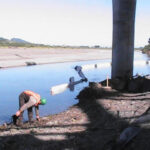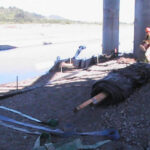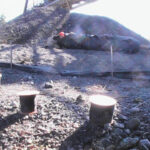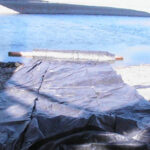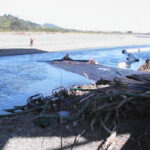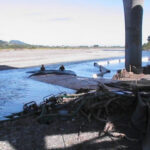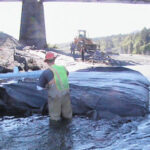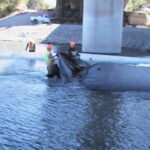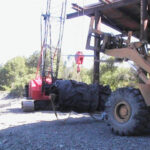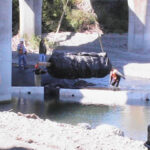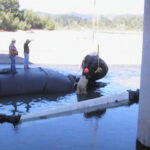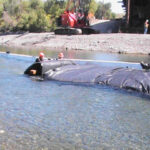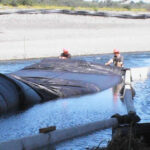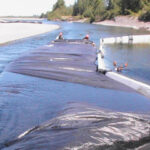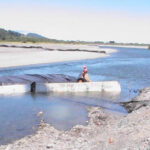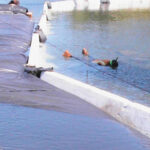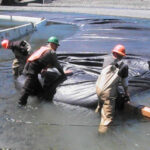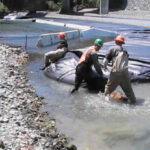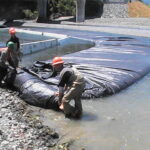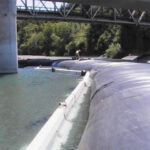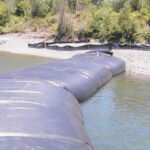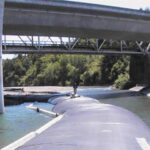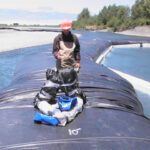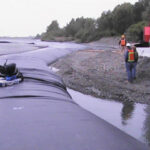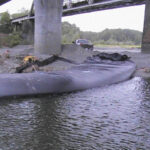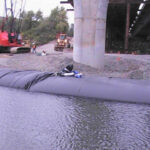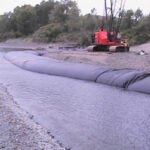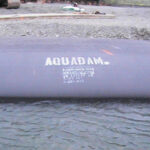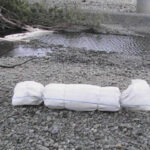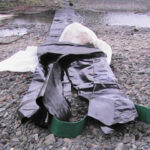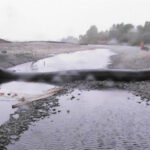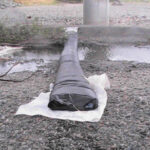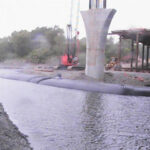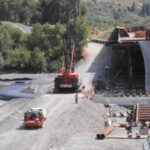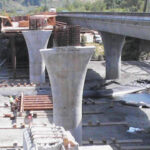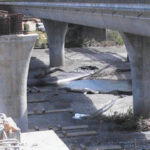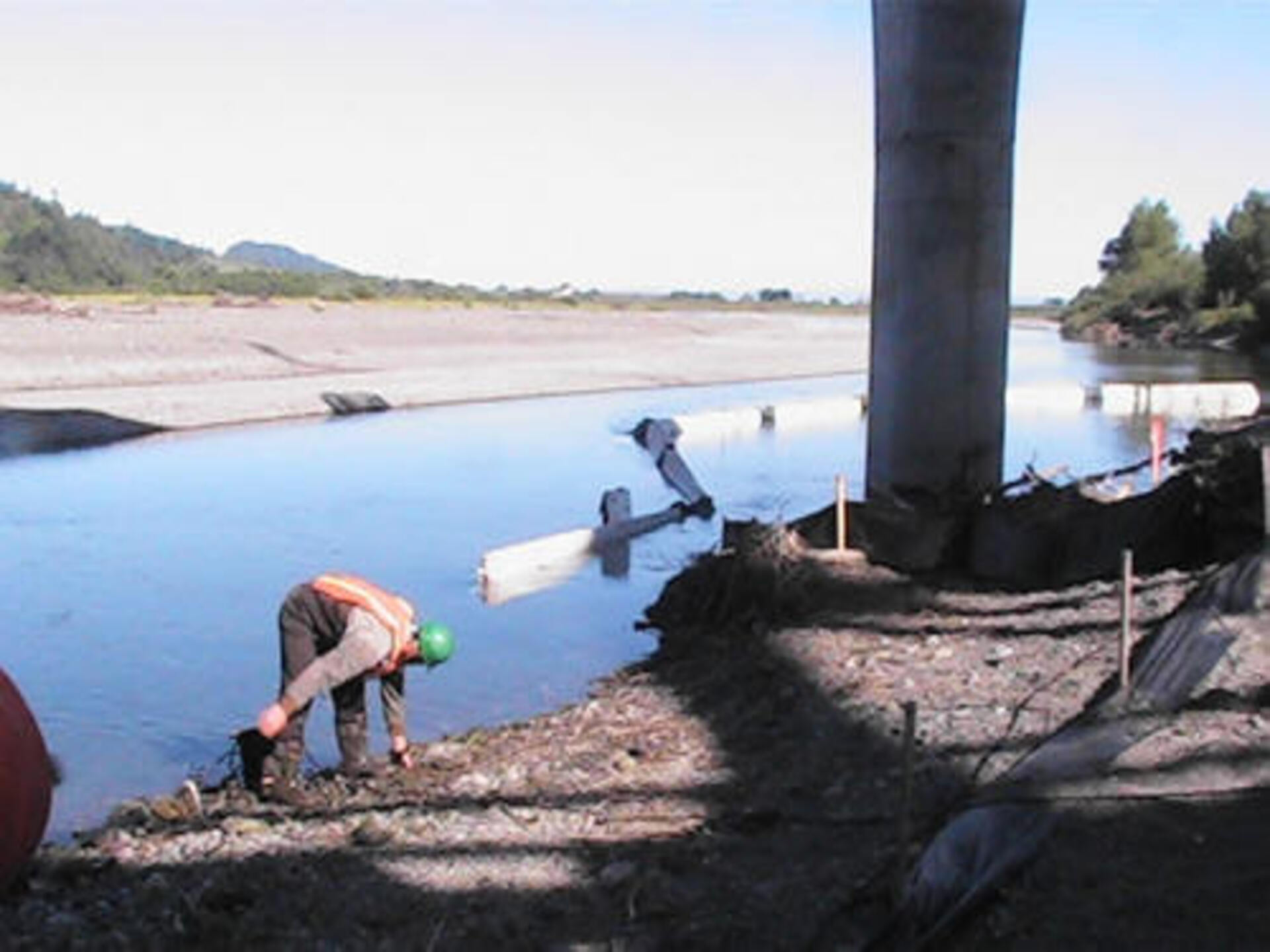
Multiple AquaDams were installed in the Van Duzen River for sediment control during upgrade construction of the Van Duzen Bridge in Alton, California. The worker in this photo is making sure there are no sharp objects laying in the path of where the AquaDam will be installed.
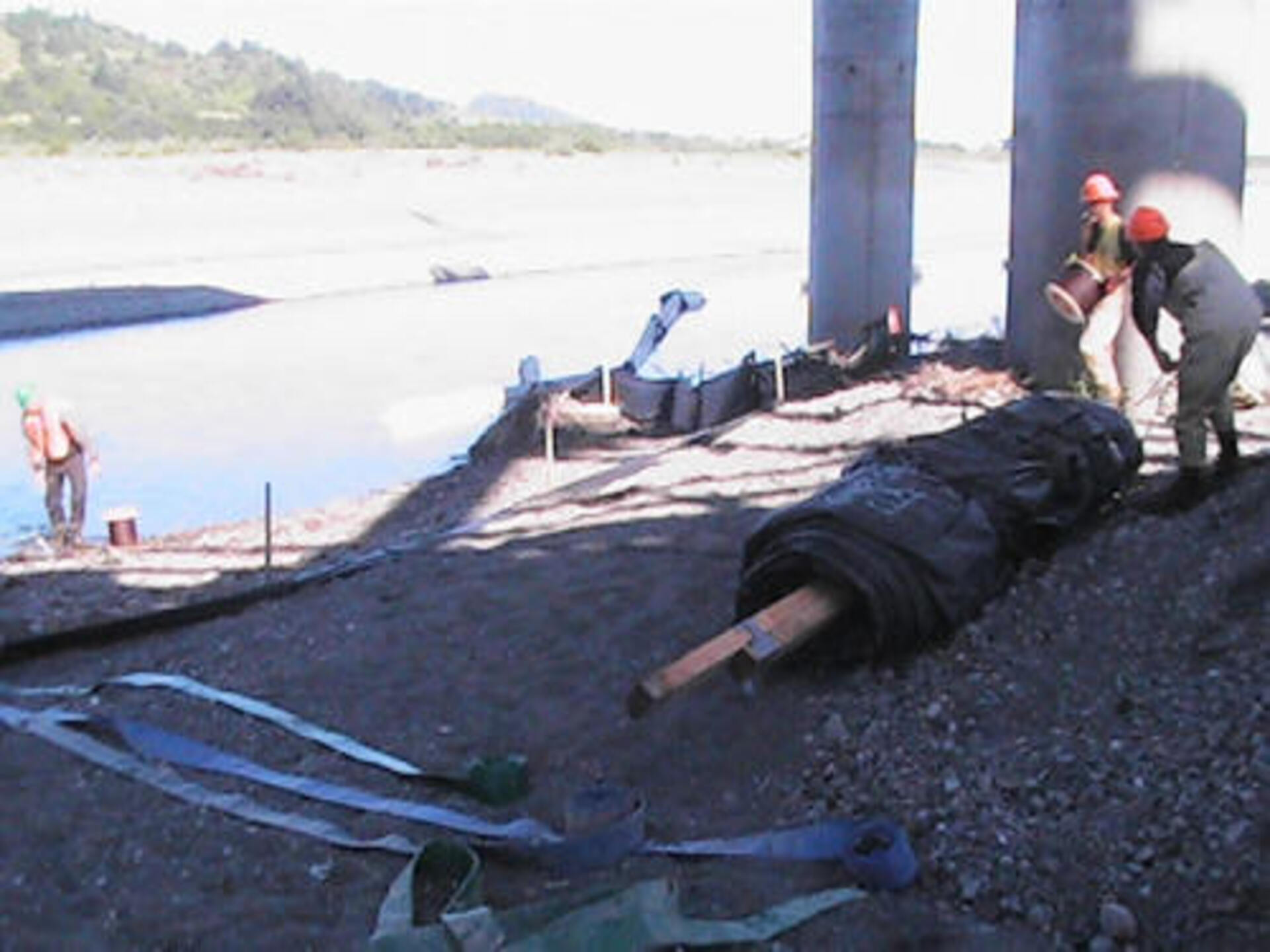
The first AquaDam has been delivered to it’s starting bank. AquaDams are delivered in a rolled-up form, similar to a carpet roll on a wooden beam. They are wrapped in a protective covering and include lifting ropes or straps for easy transportation.
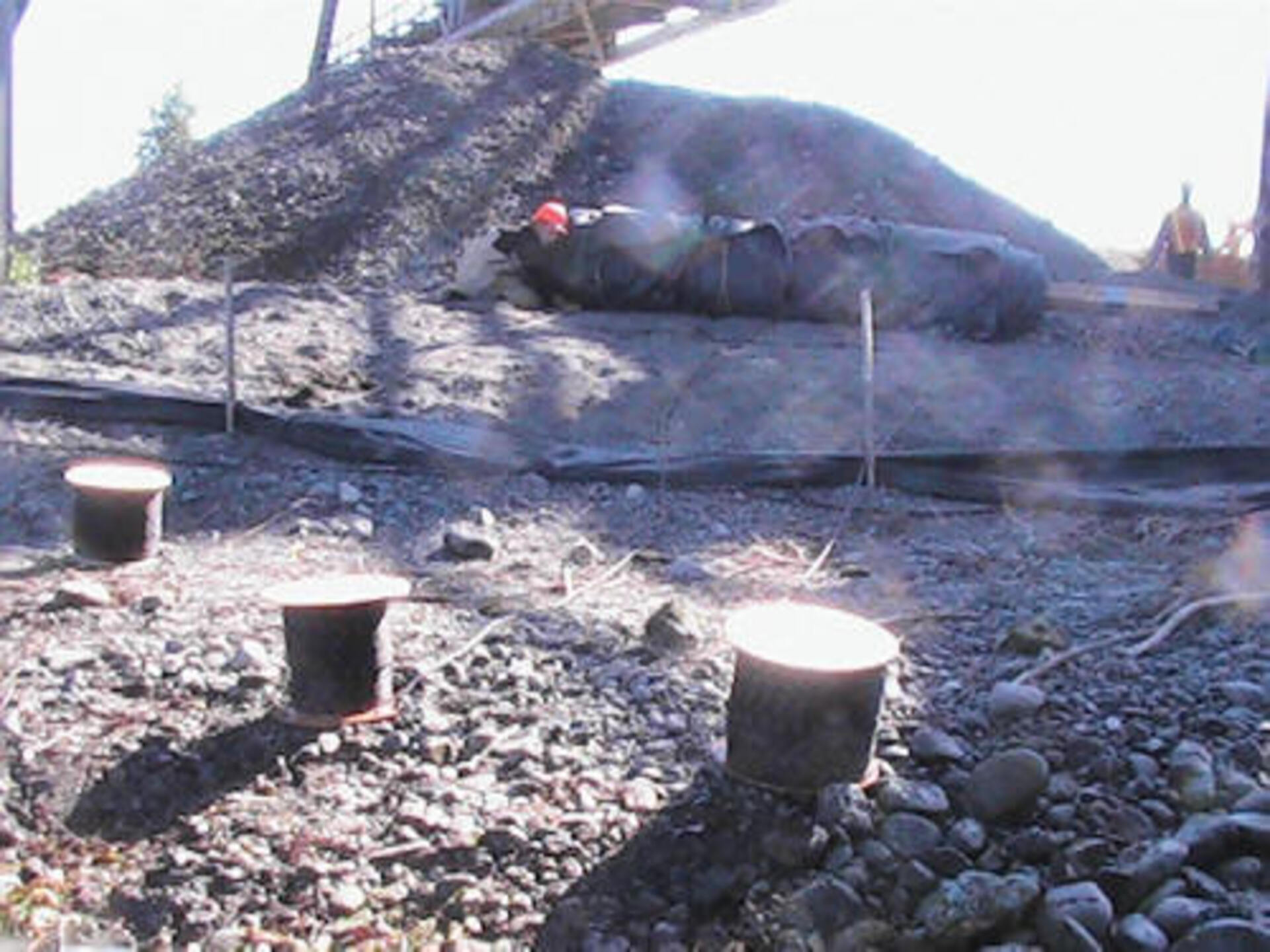
Looking up at the starting bank for the first single closed end (SCE) AquaDam. To ensure proper installation and functionality of a SCE AquaDam, it is essential to have a starting bank that maintains a higher elevation than the body of the AquaDam. The open end and fill-tubes of the SCE AquaDam must remain elevated above the full height of the dam along its designated path. It is important to note that an AquaDam will only reach its maximum height at the lowest elevation point along its designated path.
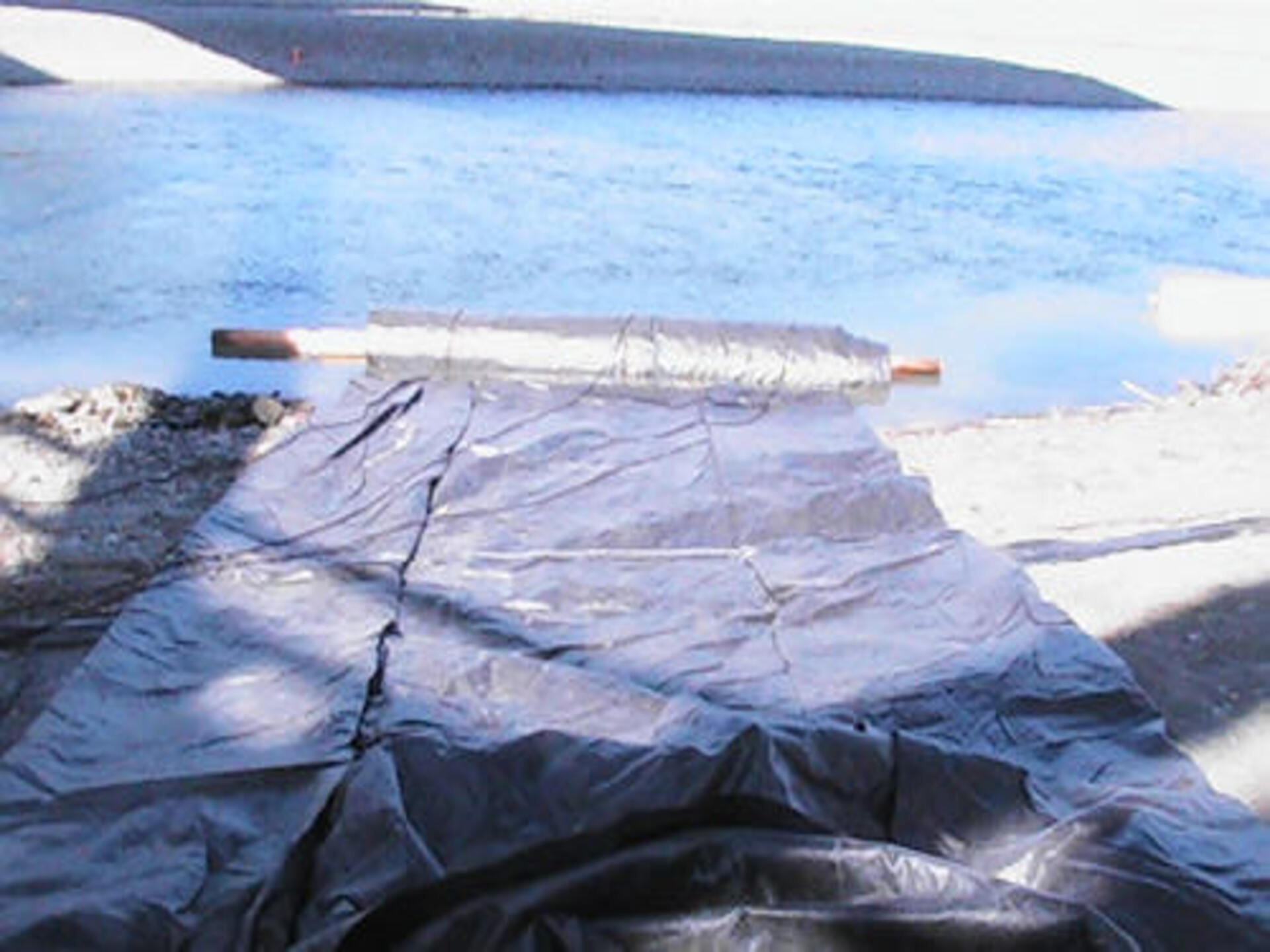
Ropes have been anchored at shore, run under the AquaDam, over top of the roll, and back to workers who control the roll while the dam is being filled with water. The ropes are used to hold back the roll, while the unrolled length fills and gains head above the surrounding water.
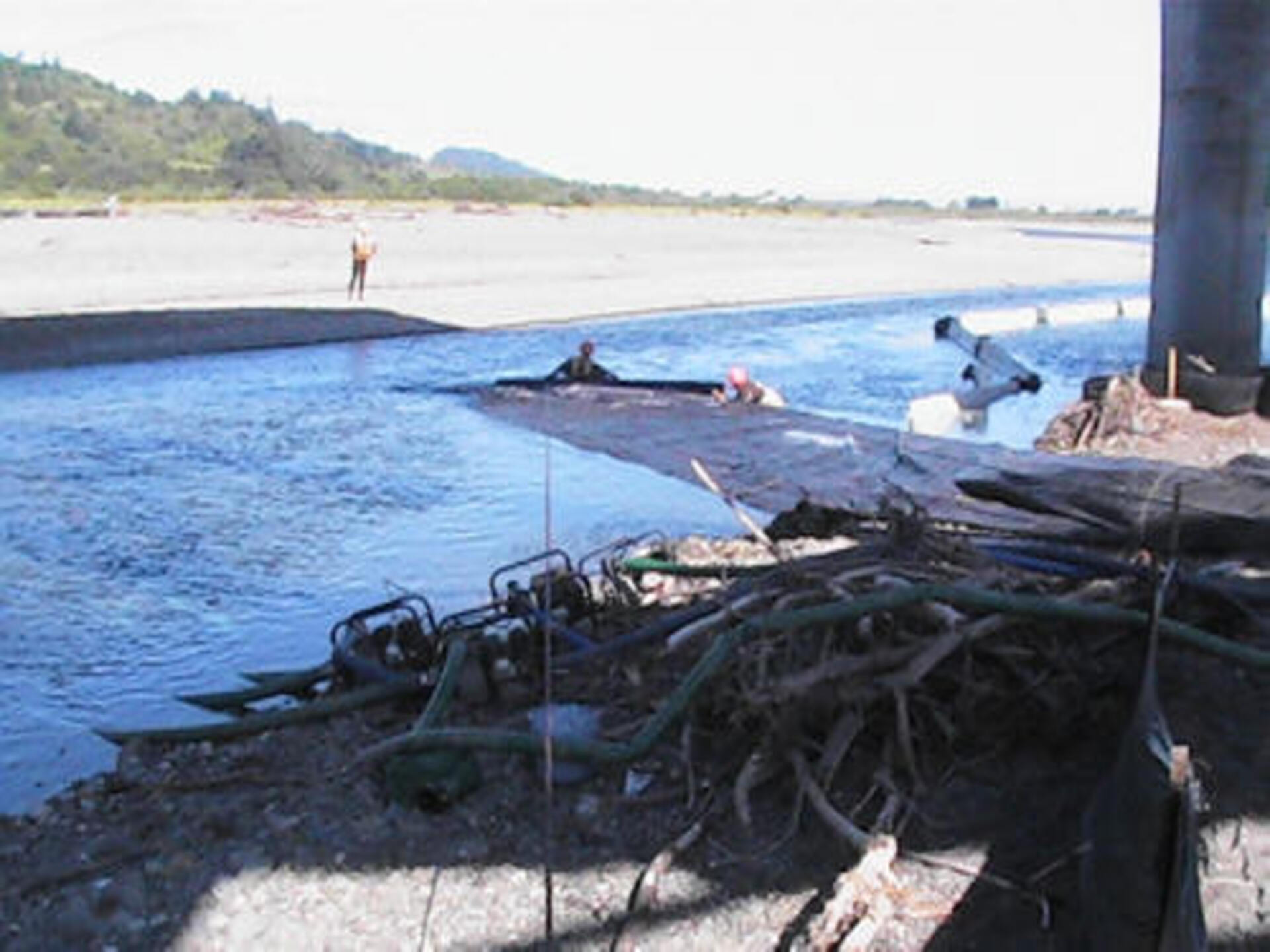
Workers have started the first turn in the AquaDam so that it will begin to head downstream now. One method for turning involves slowing down or stopping the pump connected to the fill-tube on the inside of the turn. Another option is to pull on one side of the beam in the center of the roll of the AquaDam, using ropes attached to heavy equipment.
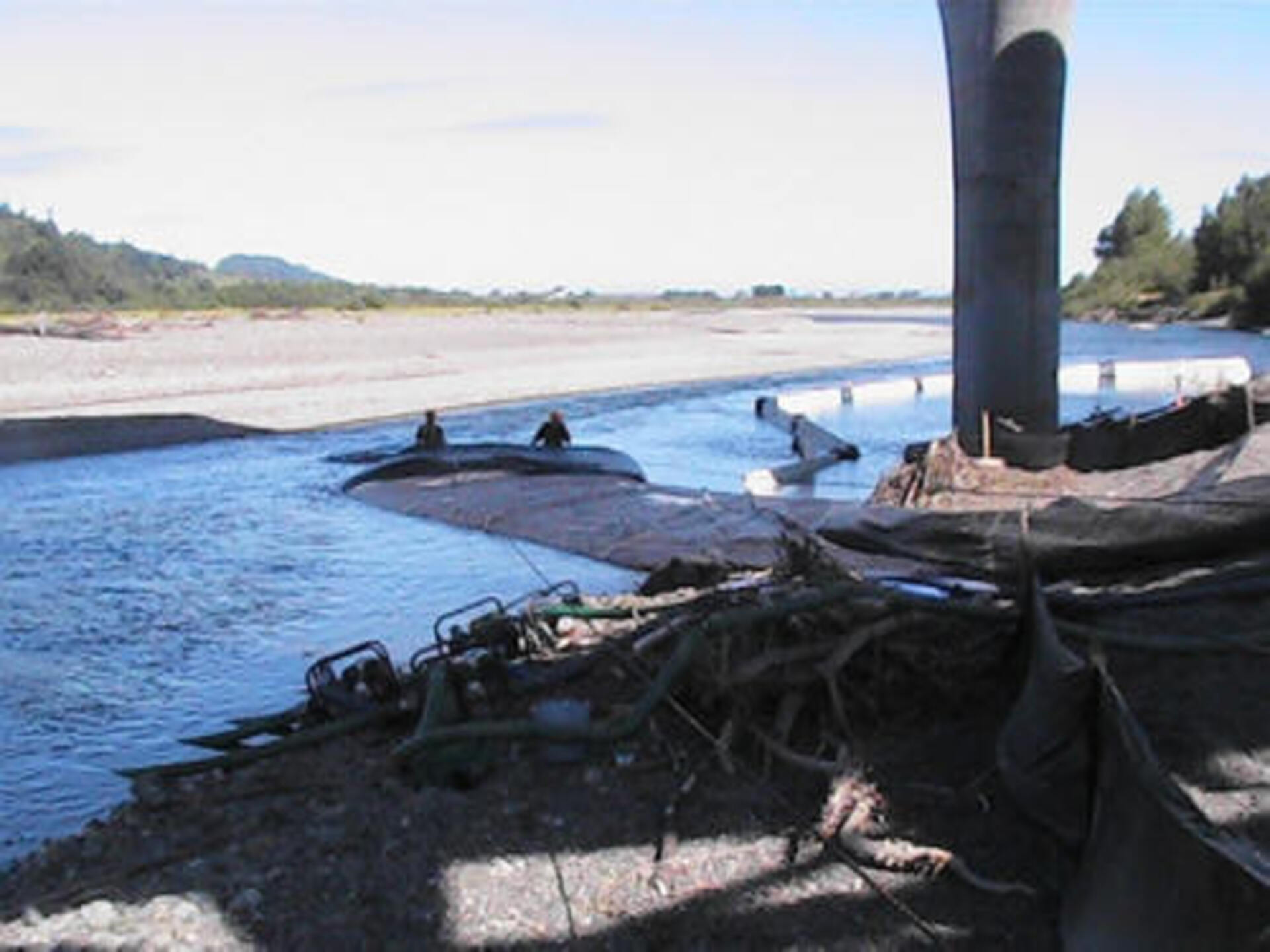
The AquaDam continues to be filled with water, as workers monitor the roll end and the head that the unrolled length has. It is important to keep head in the AquaDam above the surrounding water while installing in flowing water.
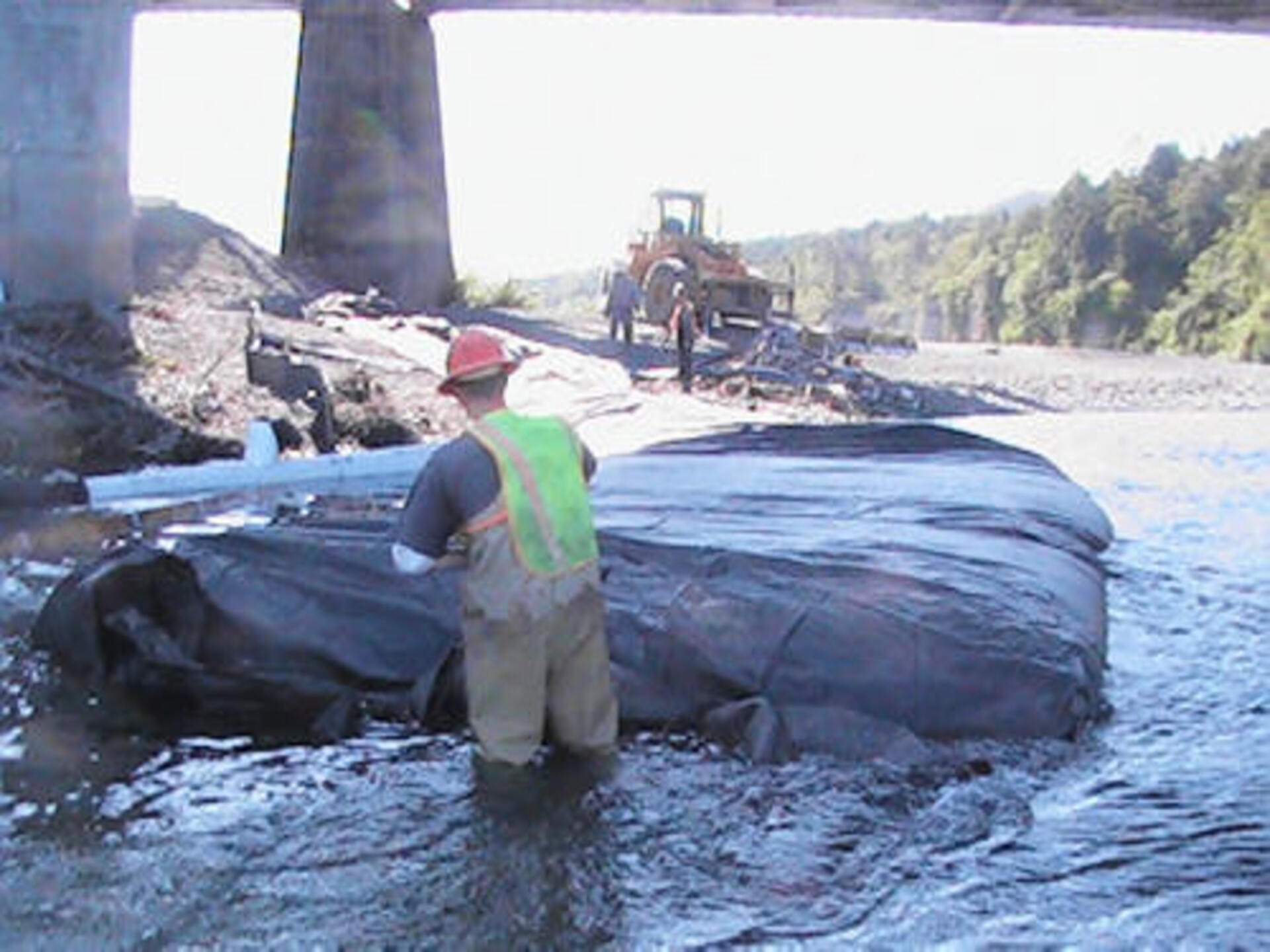
The first SCE AquaDam has been unrolled to its closed end which has a connection collar. Another SCE AquaDam will be connected to the closed end here with the connection collar.
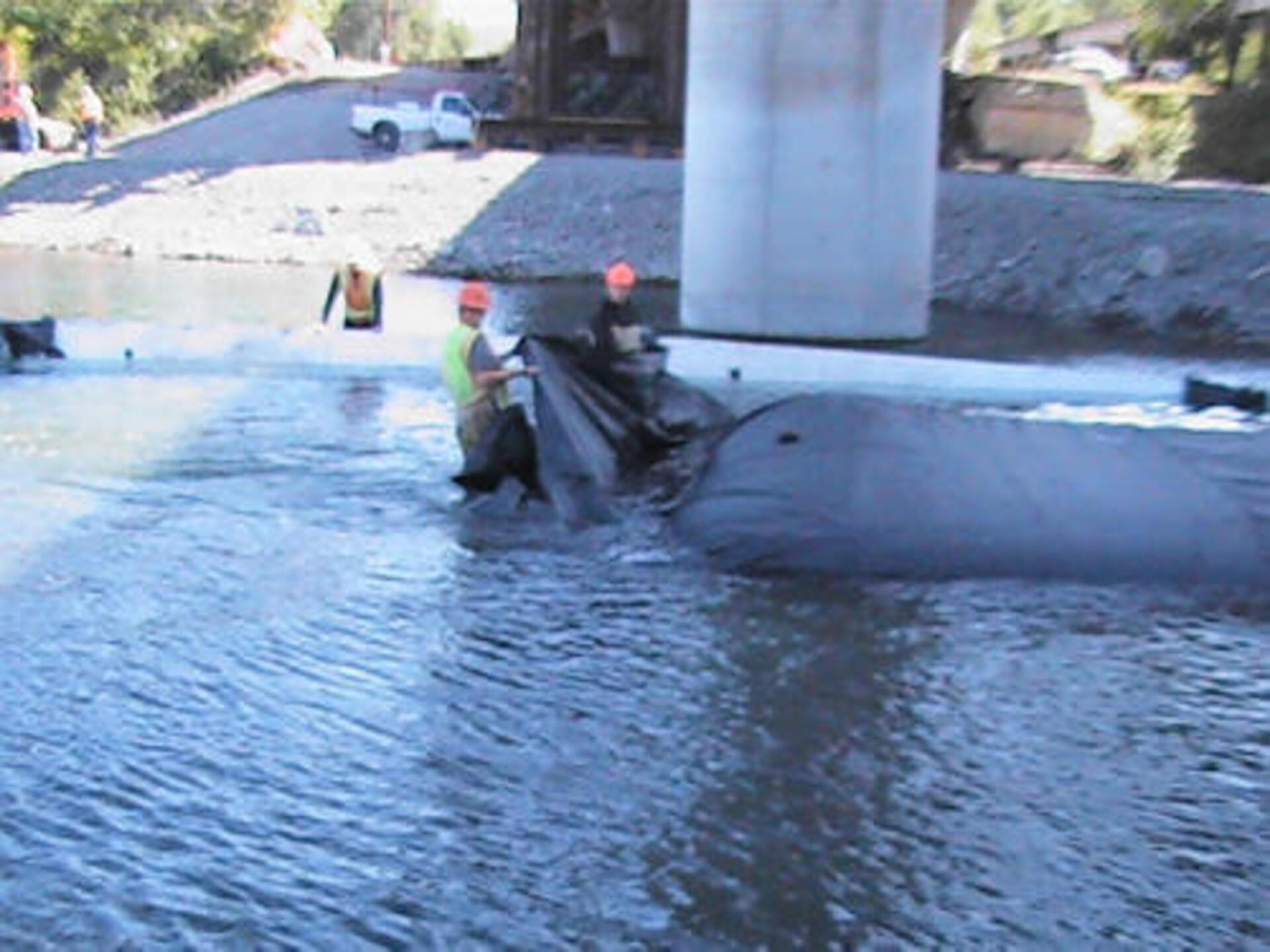
Workers scrunch up the material of the collar in preparation of the next SCE AquaDam.
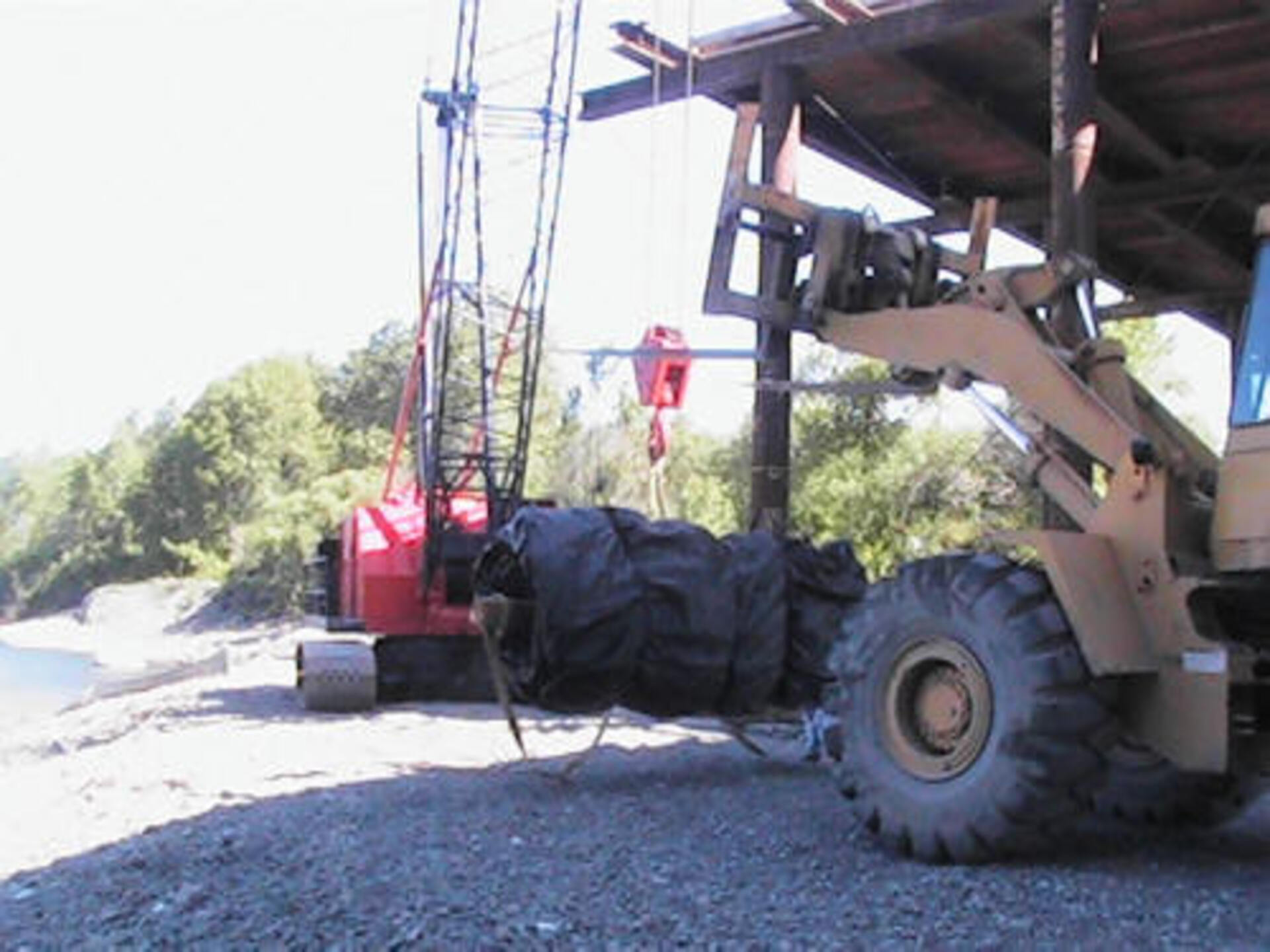
Here comes the next AquaDam.
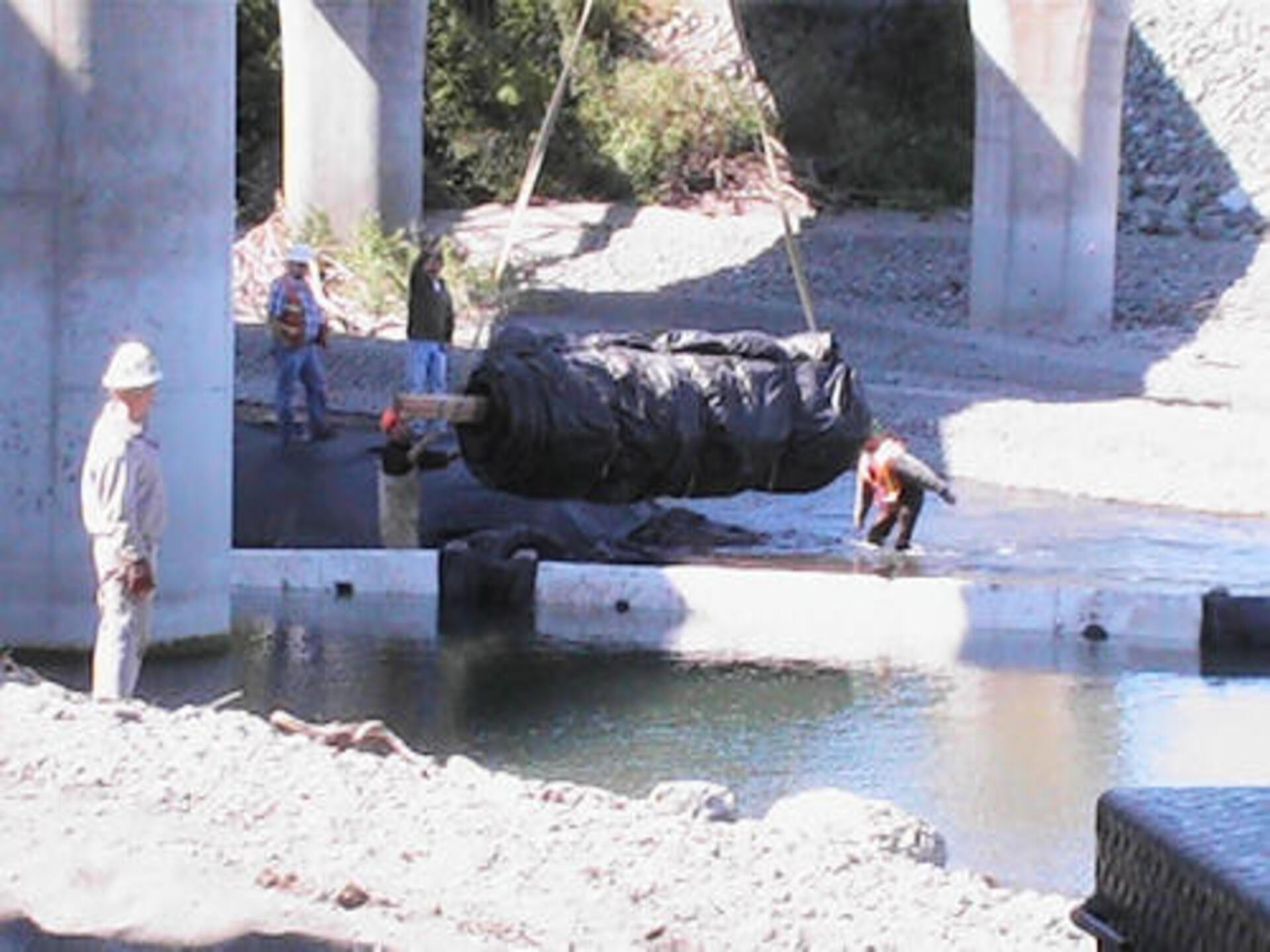
Workers carefully lower the next dam into place, right at the closed end of the first AquaDam.

Workers carefully position the AquaDam to ensure it is correctly aligned. This allows the AquaDam to unroll in a clockwise direction as it is being filled with water.
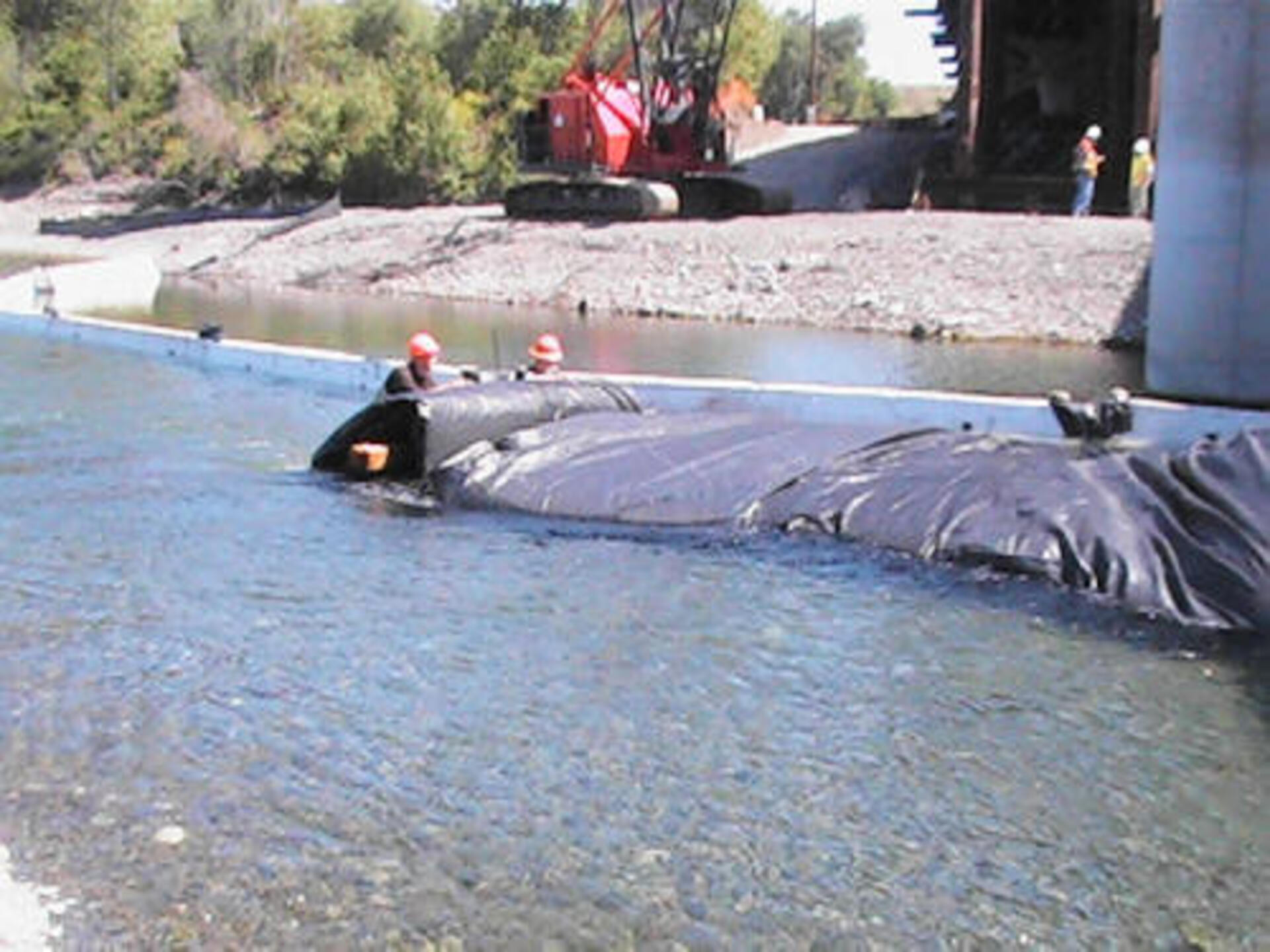
The workers have successfully made the connection, and are currently in the process of filling the second SCE AquaDam with water.
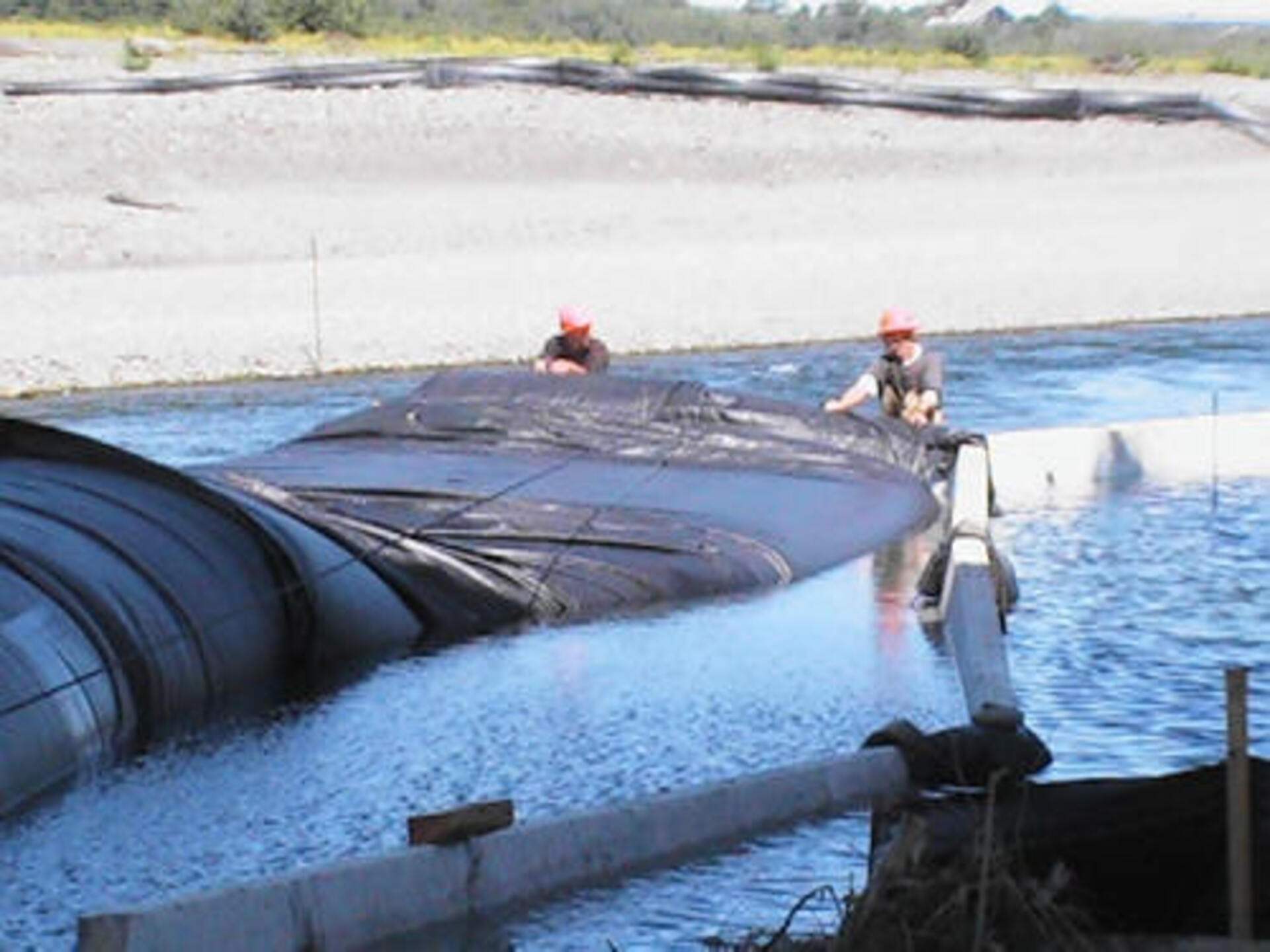
As the AquaDam is filled with water, the pressure from the water inside the fill-tubes pushes against the roll end, causing it to gradually unroll. Workers take caution that there is always head in the unrolled body of the AquaDam above the river.
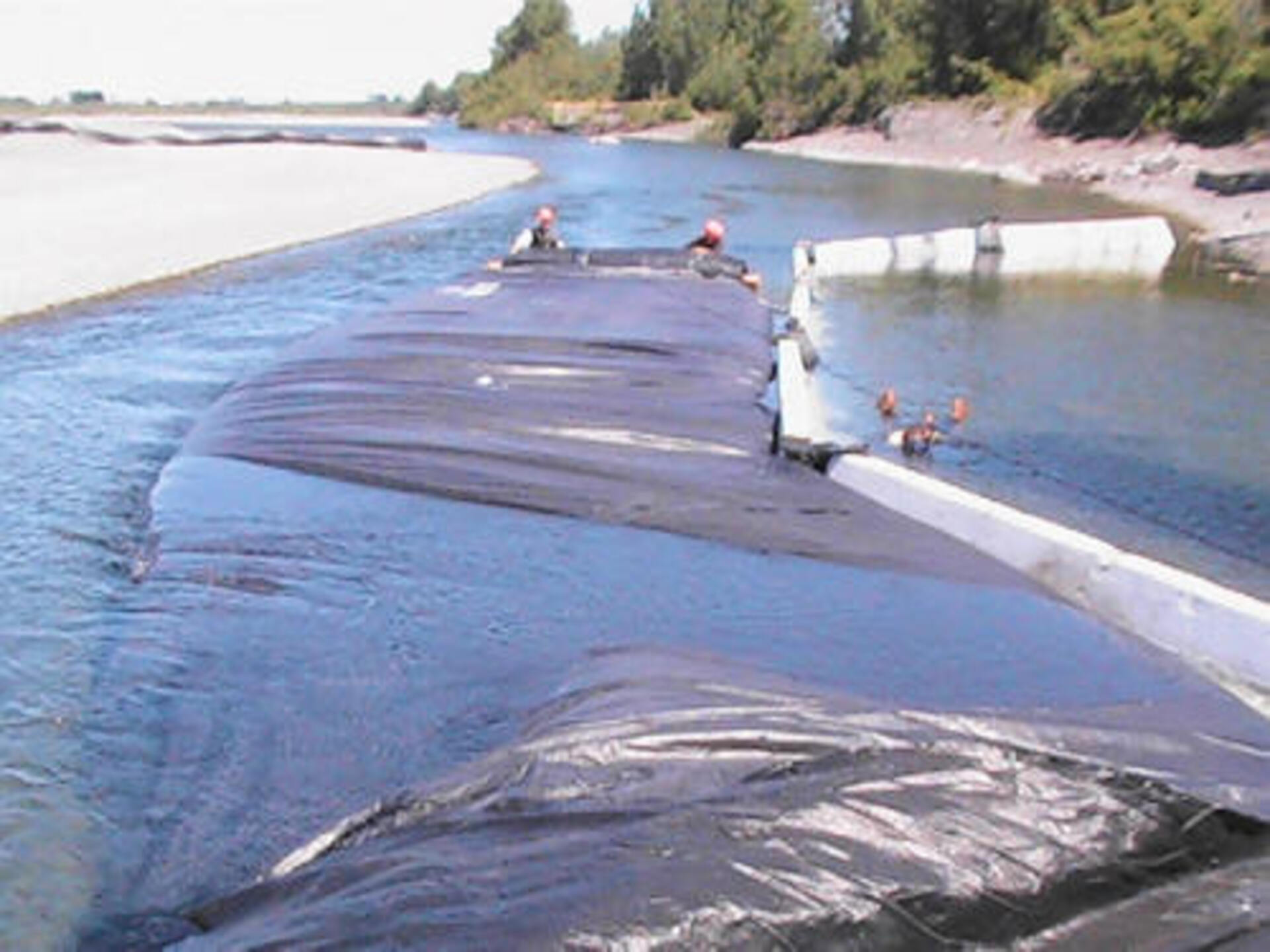
The river water has begun to over the top of the AquaDam. Workers will need to hold the roll end and allow the body of the AquaDam to build head again.
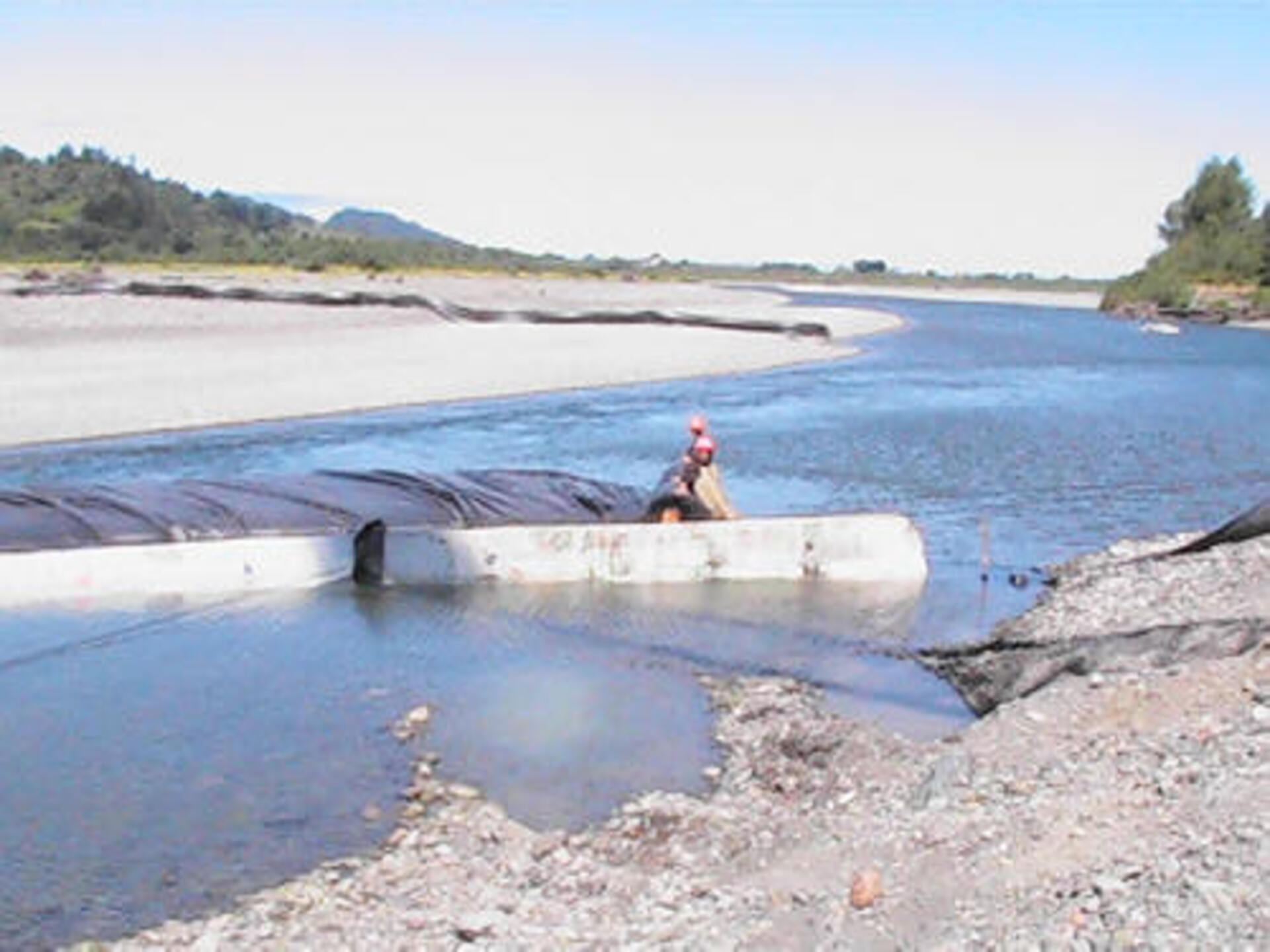
The second AquaDam has almost completely unrolled to its ending bank.
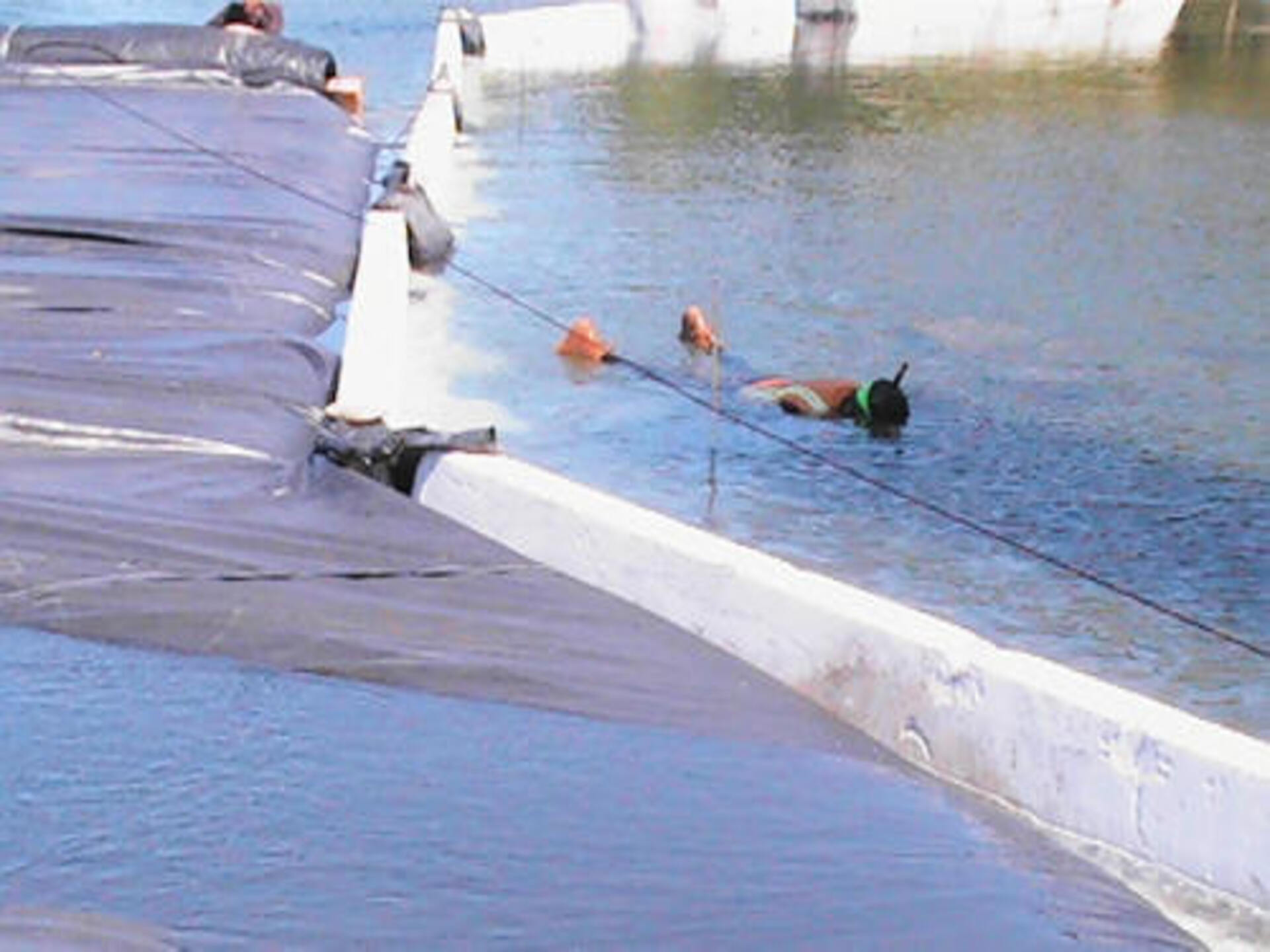
A specialist is looking to rescue any stranded fish that may still remain.
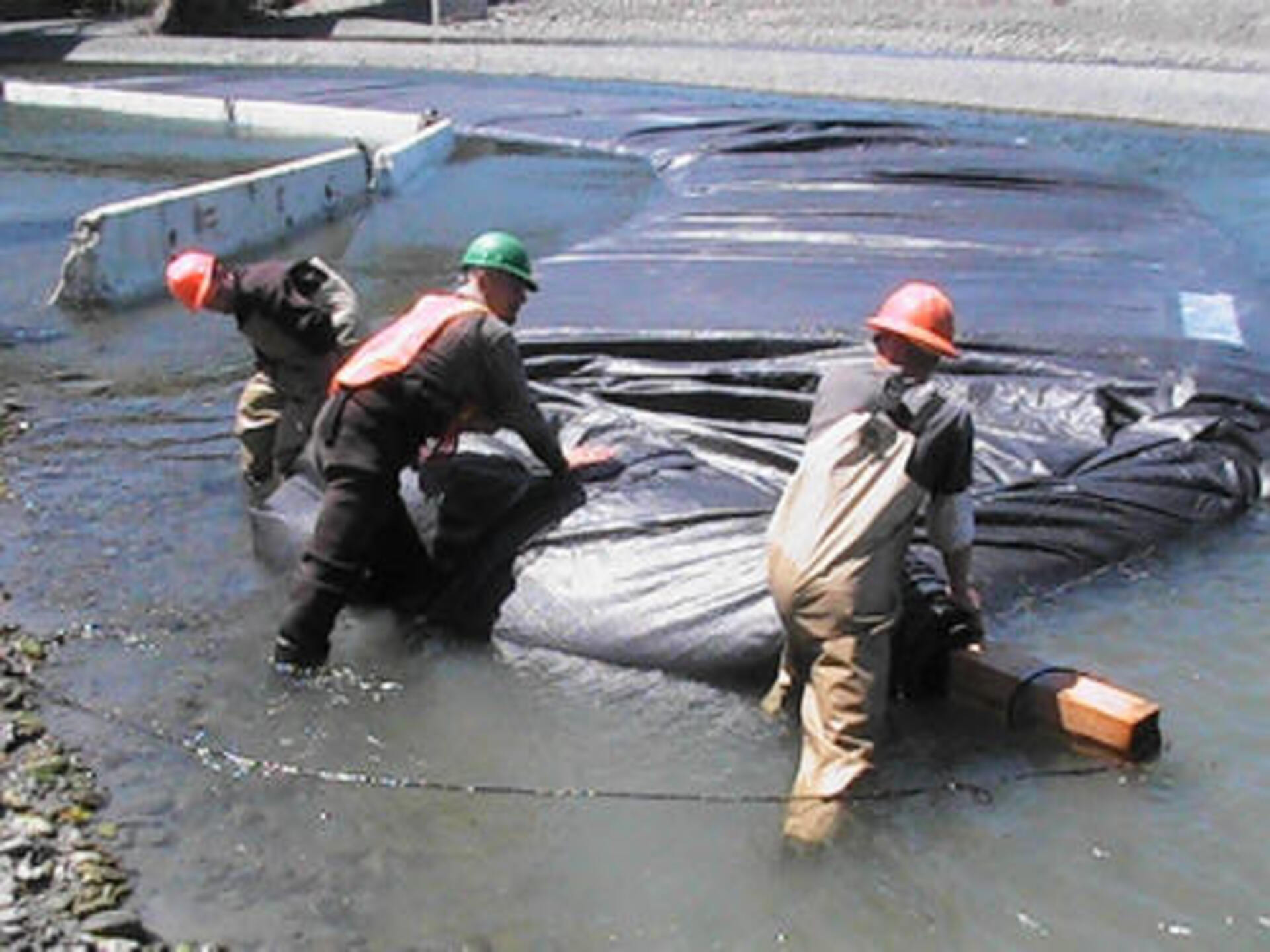
The closed end must meet the ending bank square.
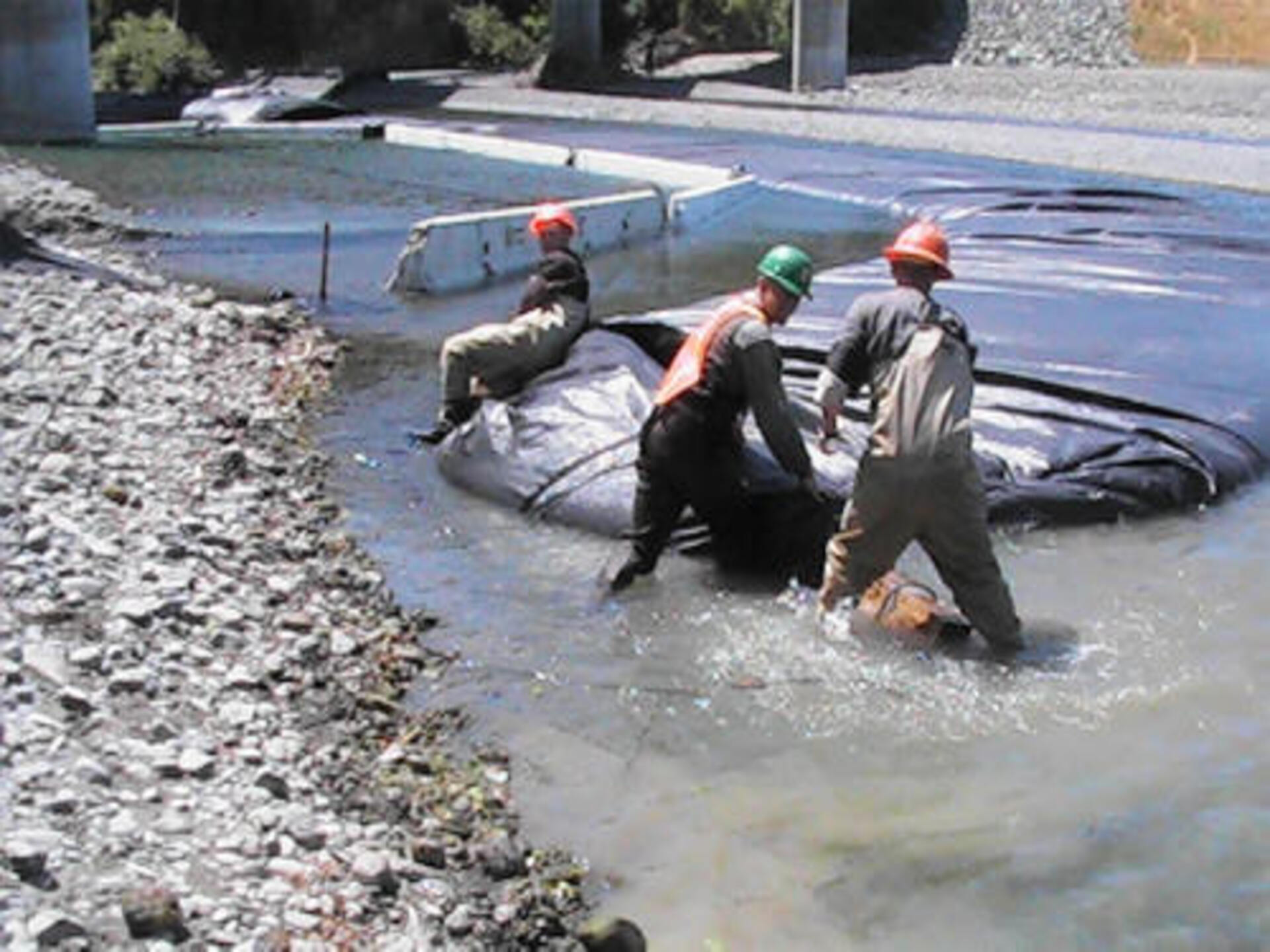
Workers manipulate the roll and beam to line it up square with its ending bank.
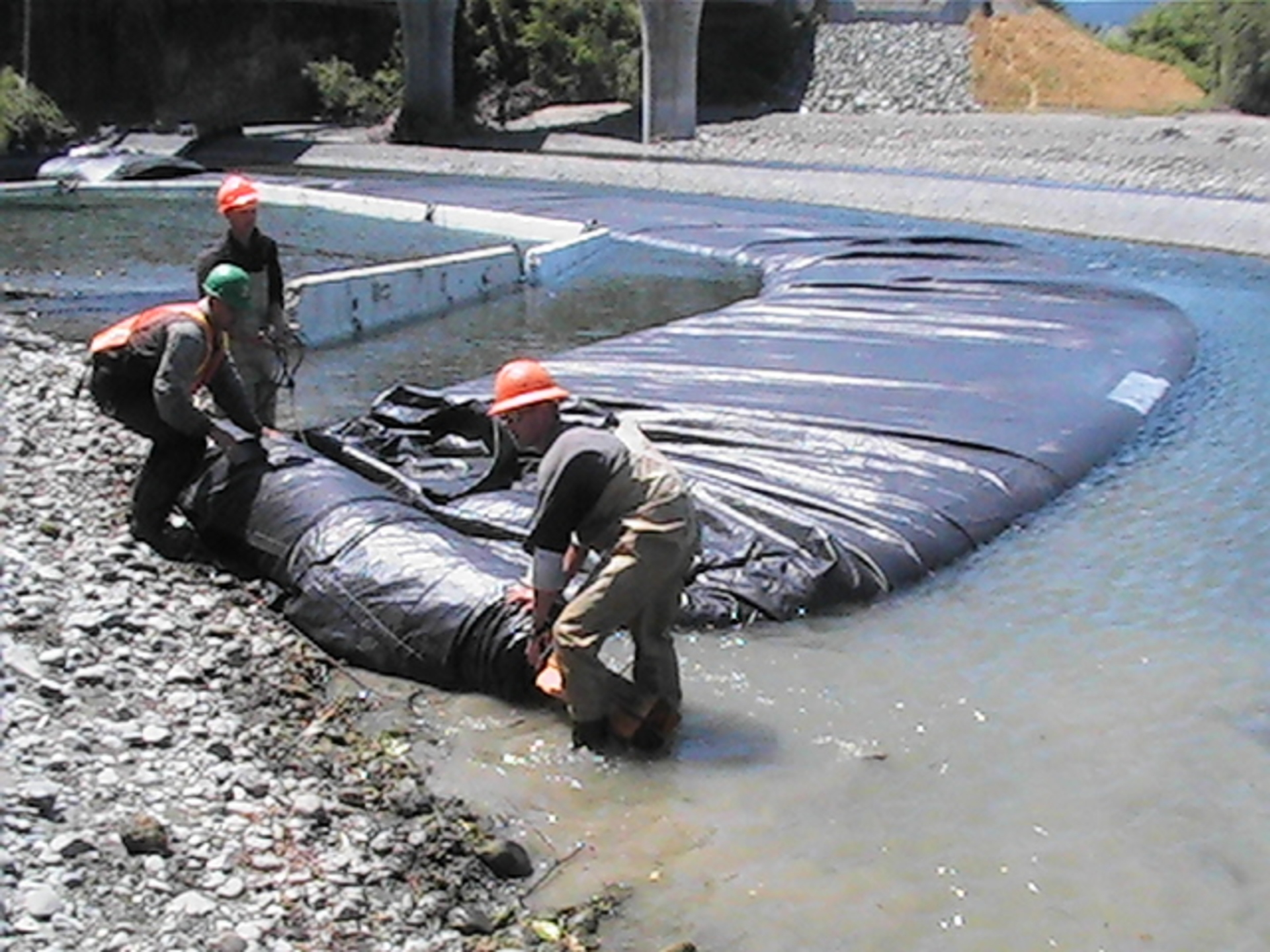
Any remaining length left on the roll will simply be tied back so that as the unit is filled the roll will remain stationary. Extra length is always better than not enough.
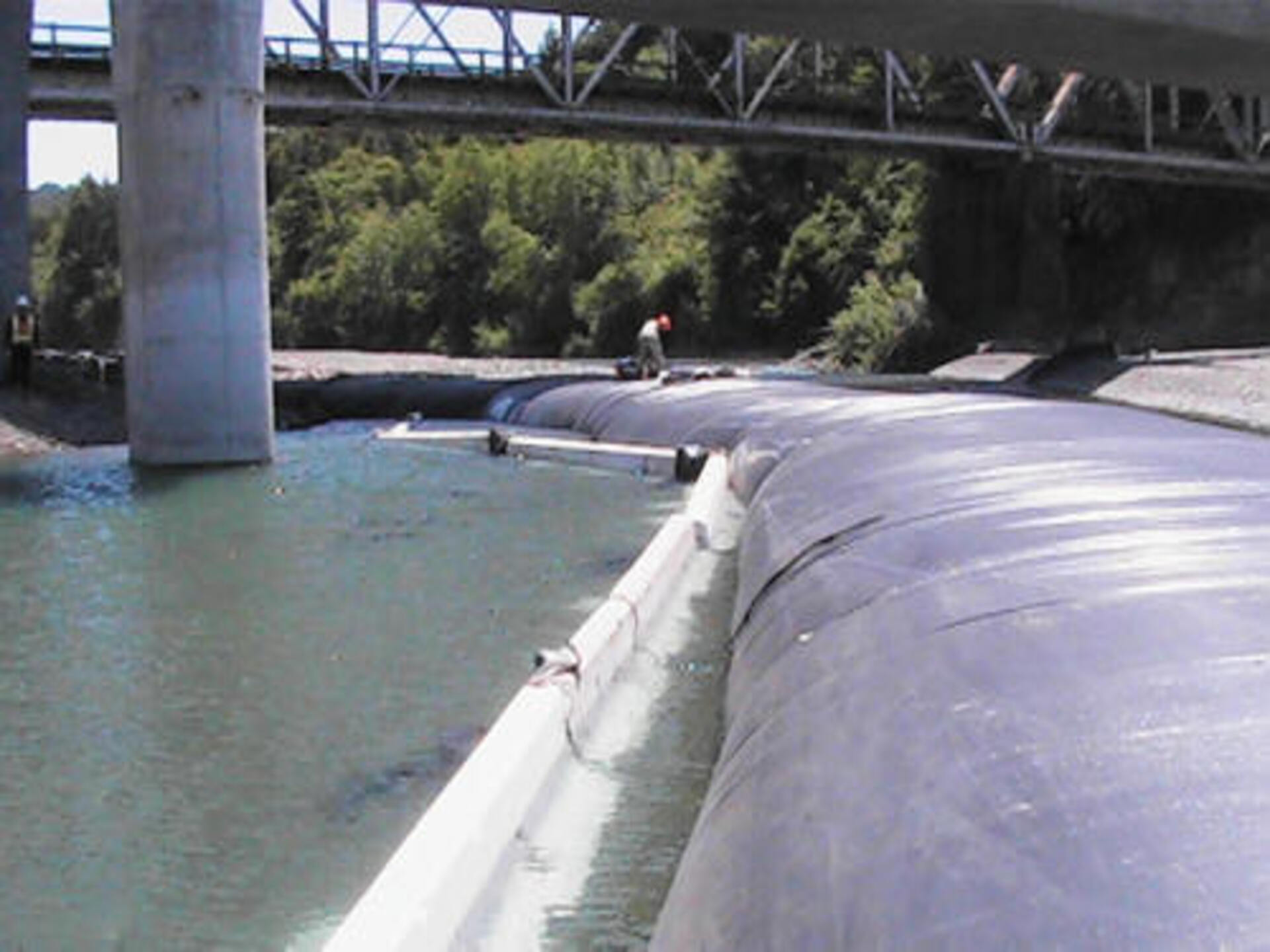
Workers finish filling the second SCE AquaDam with the river’s water.
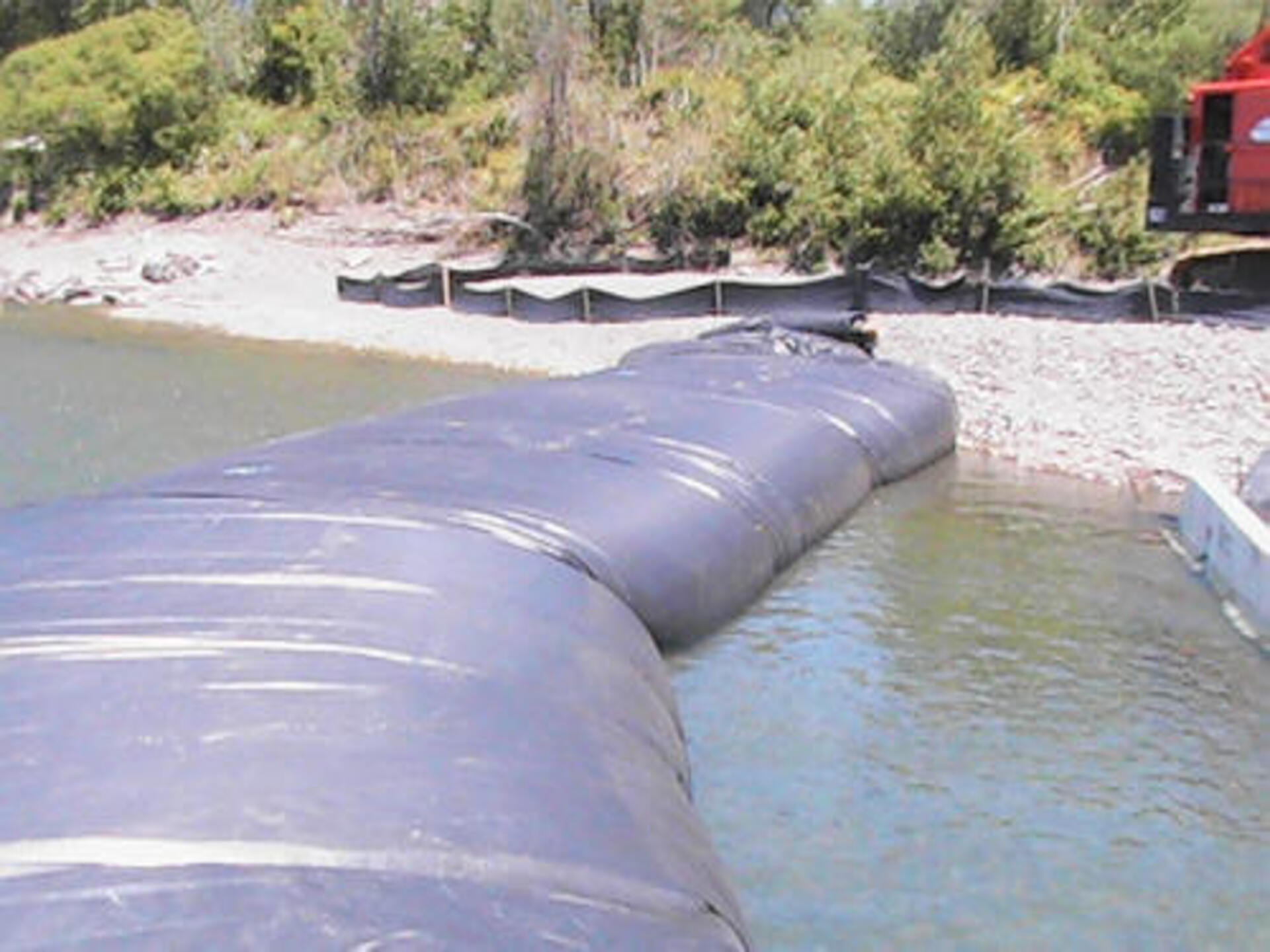
The roll end of the second SCE AquaDam has been secured and the unit is almost full.
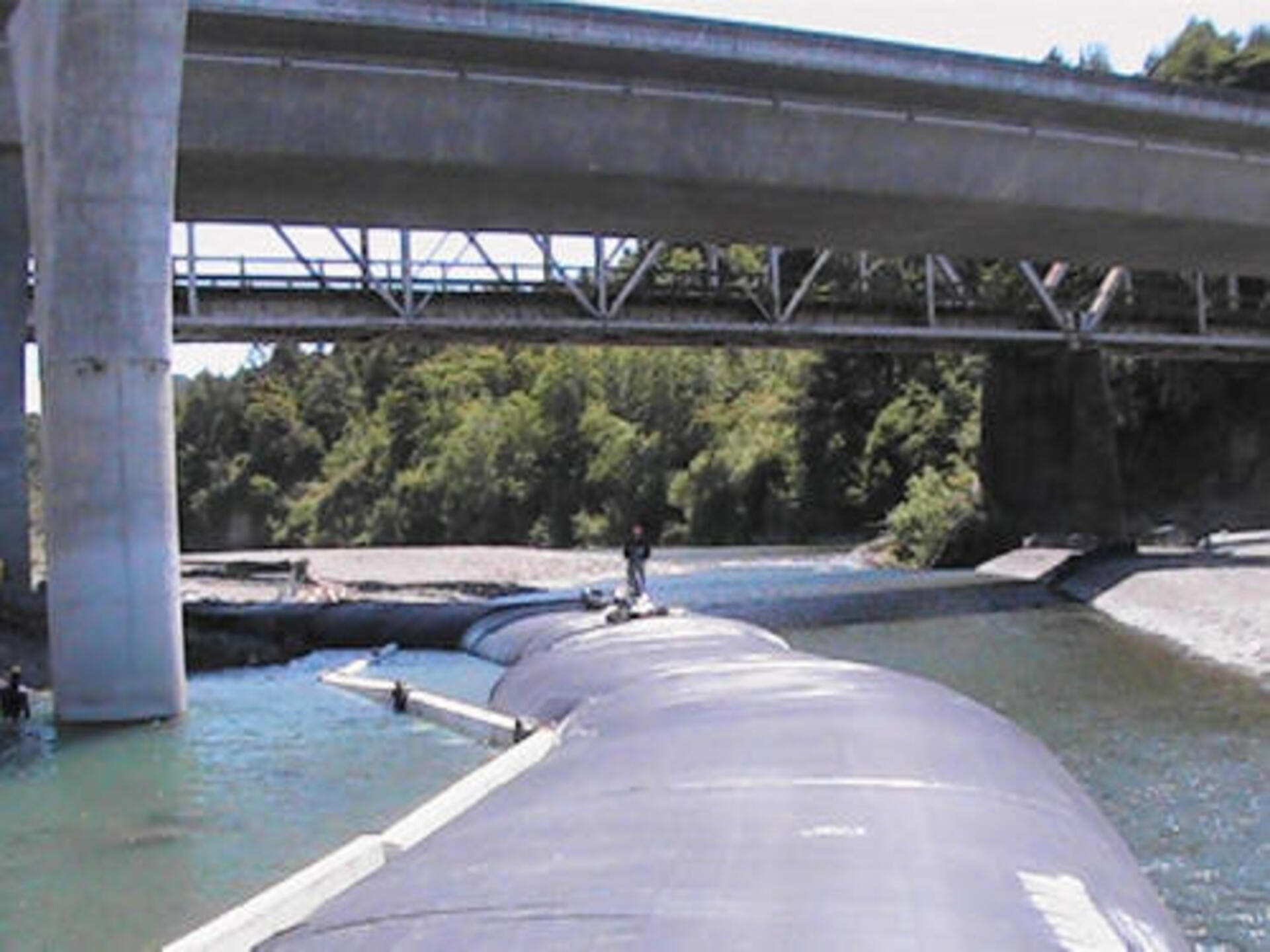
The “K” rails were used to help support the AquaDams.
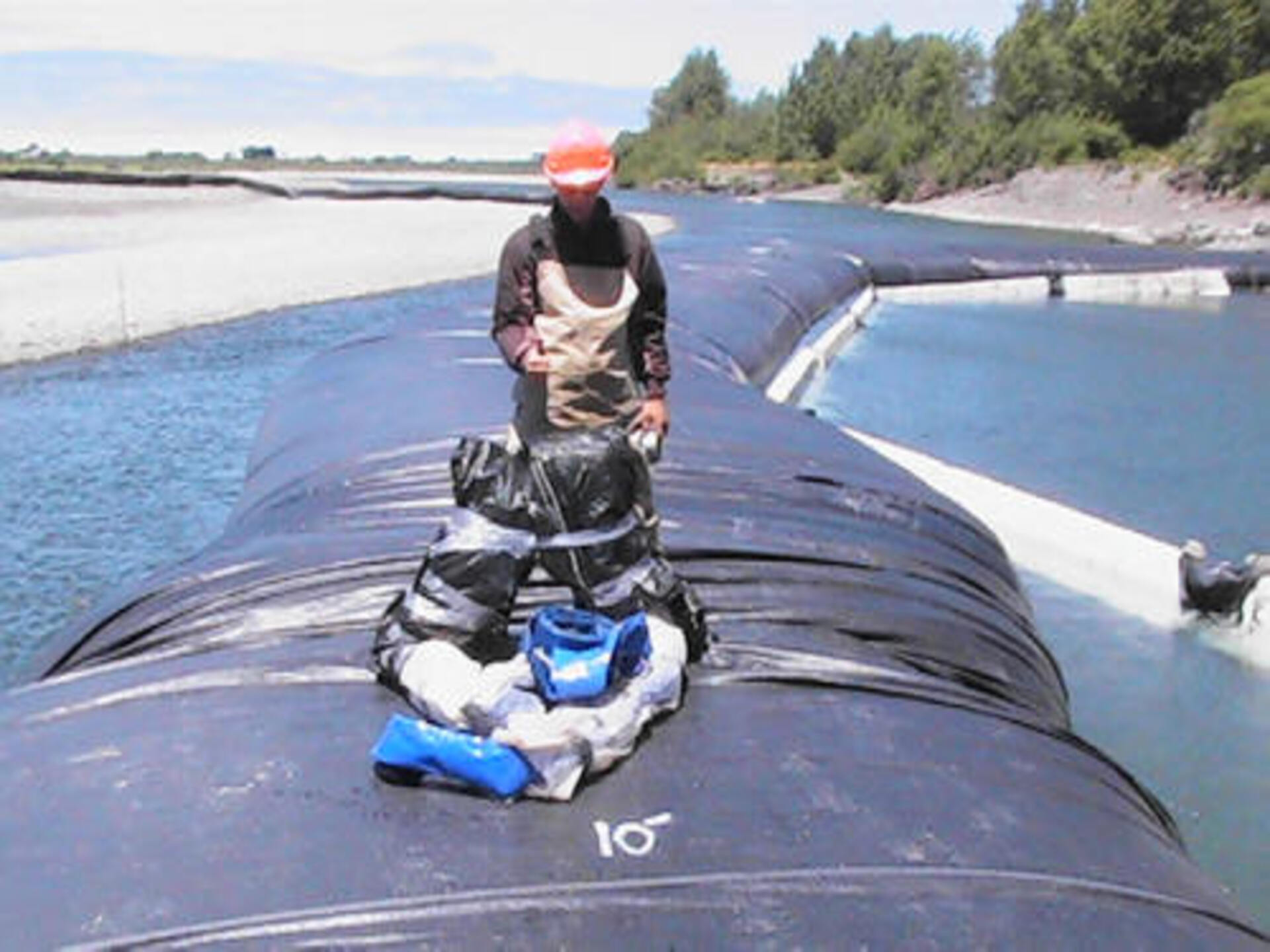
After the second SCE AquaDam was full of water, workers tied up and secured it’s fill-tubes, to prevent any water from draining out.
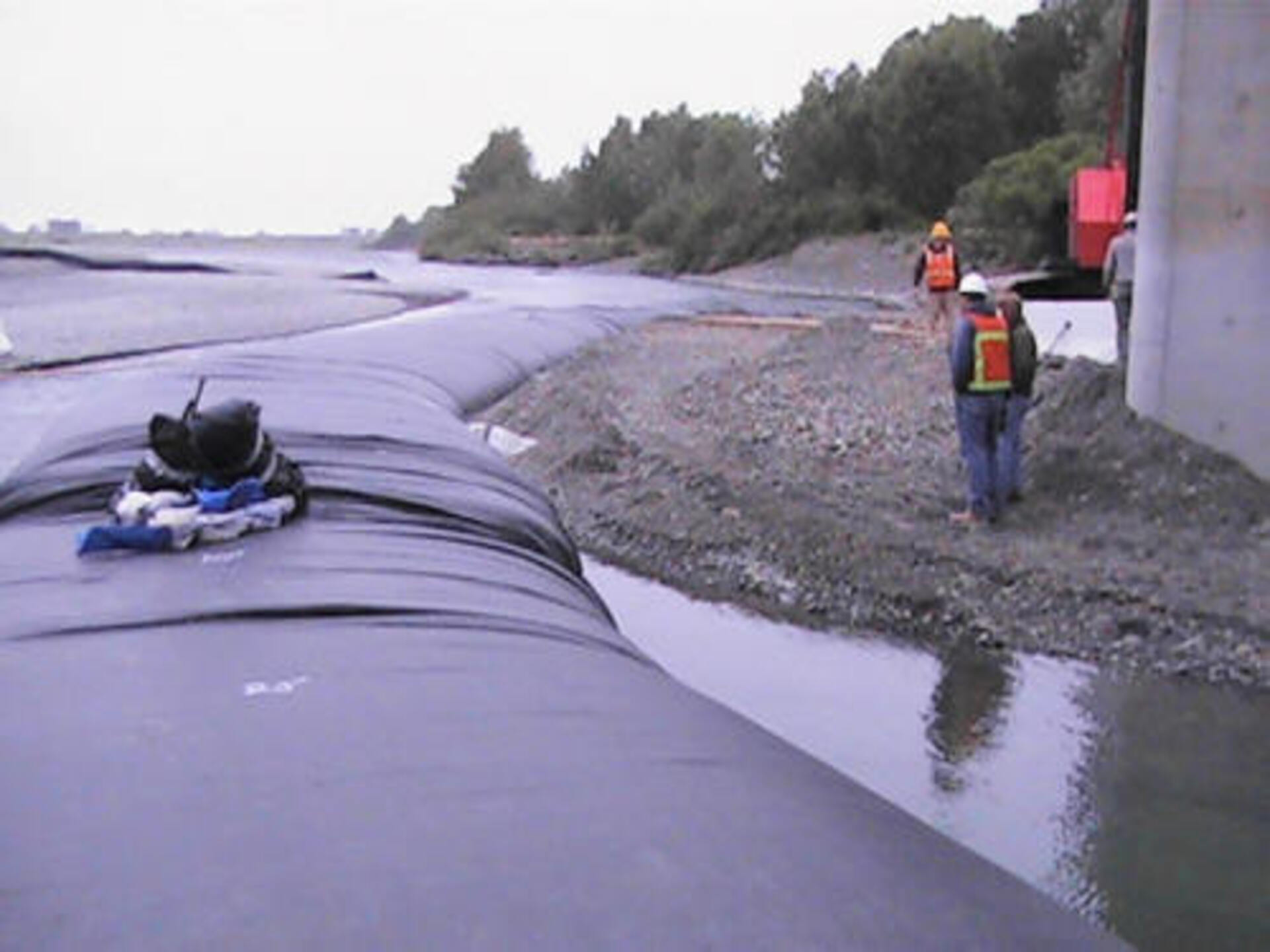
Workers have pushed riverbank gravel up to the “K” rails and inner perimeter of the AquaDam cofferdam system.
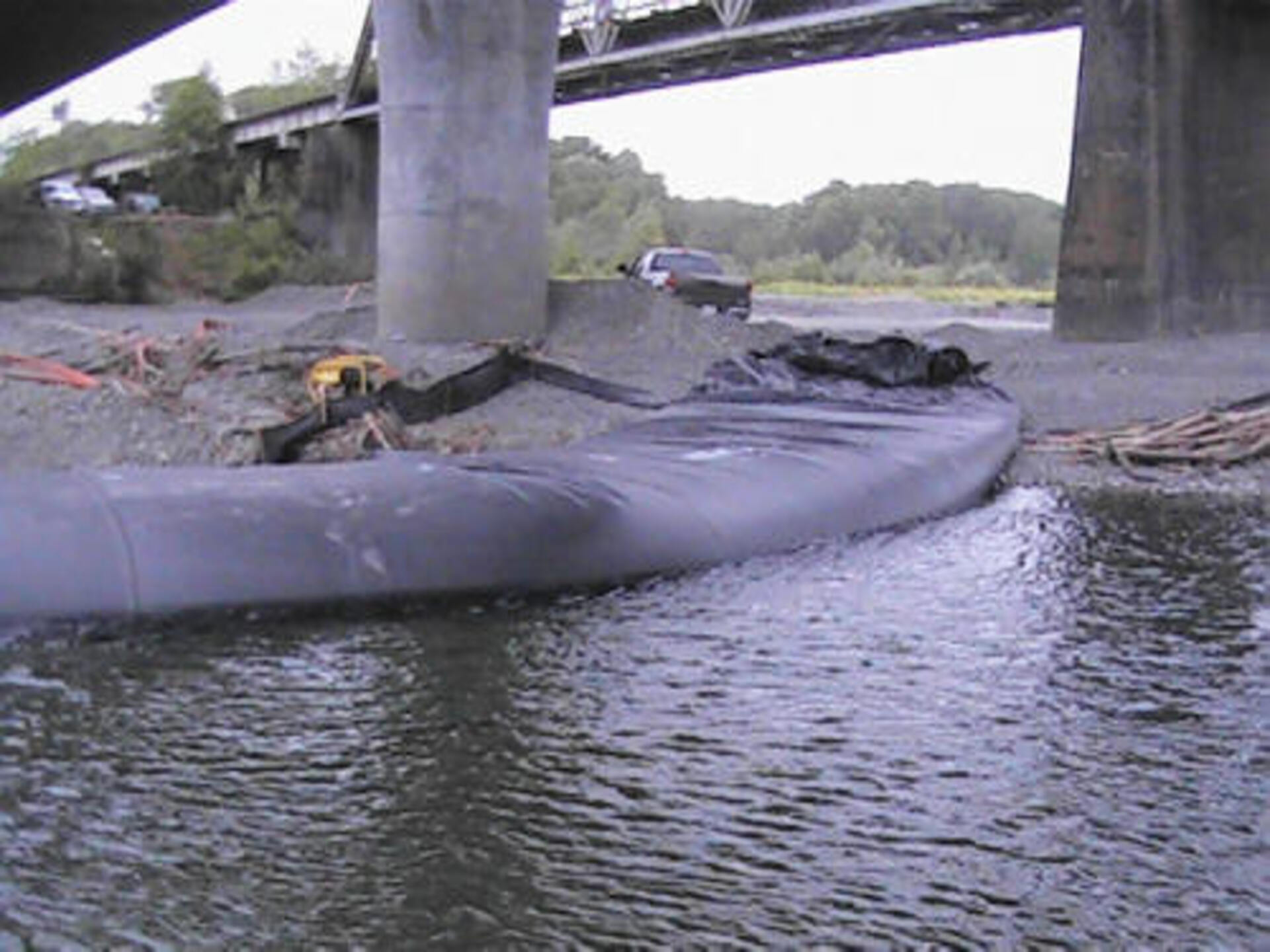
Here we can see the starting bank for the first SCE AquaDam and it’s fill-tubes have also been tied up and secured.
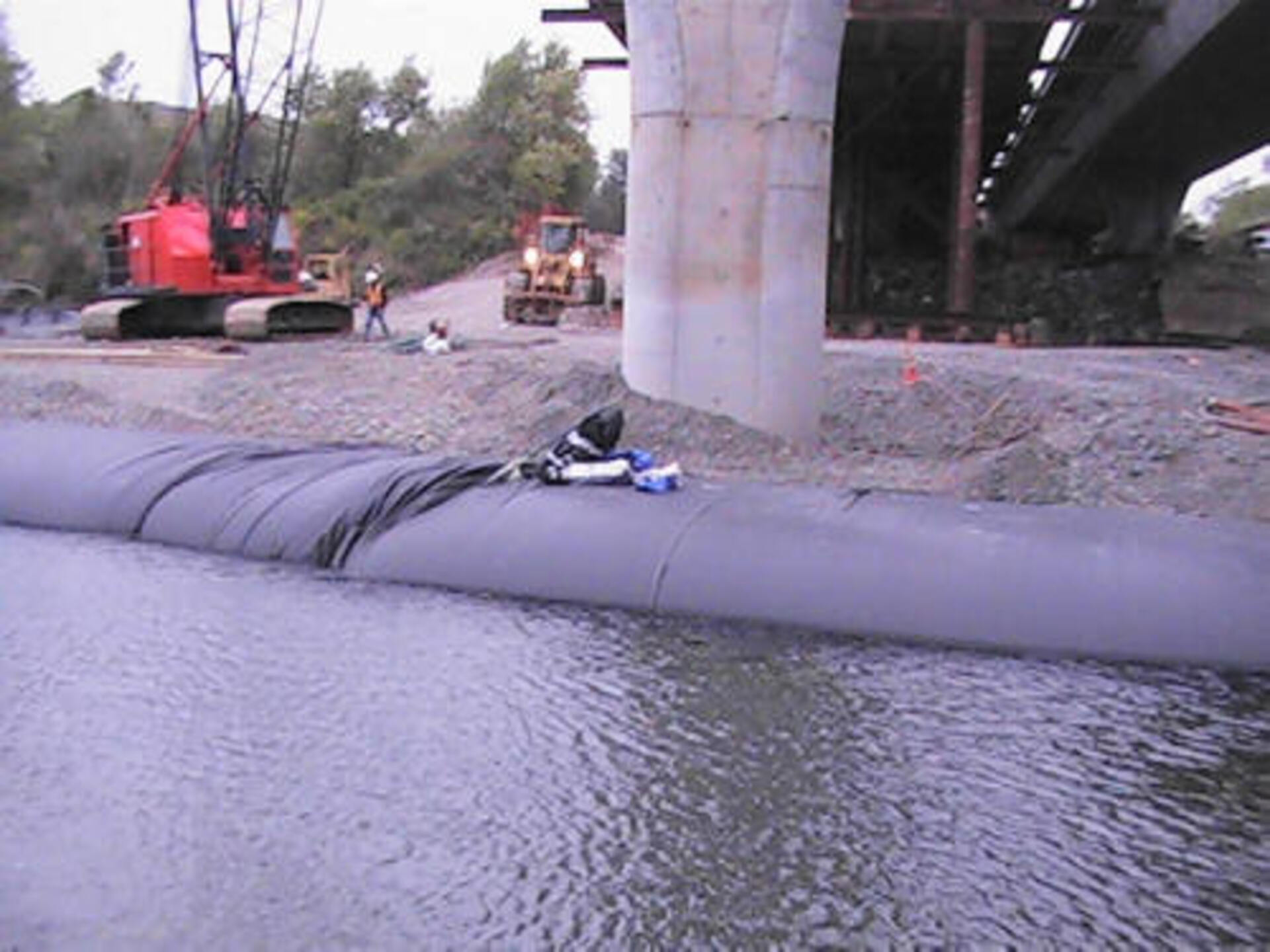
Here we can see the two AquaDams jointed together with a connection collar. The fill-tubes of the second dam were pulled through holes in the collar and the it’s open end was bloused out atop the closed end of the first dam inside of the collar.
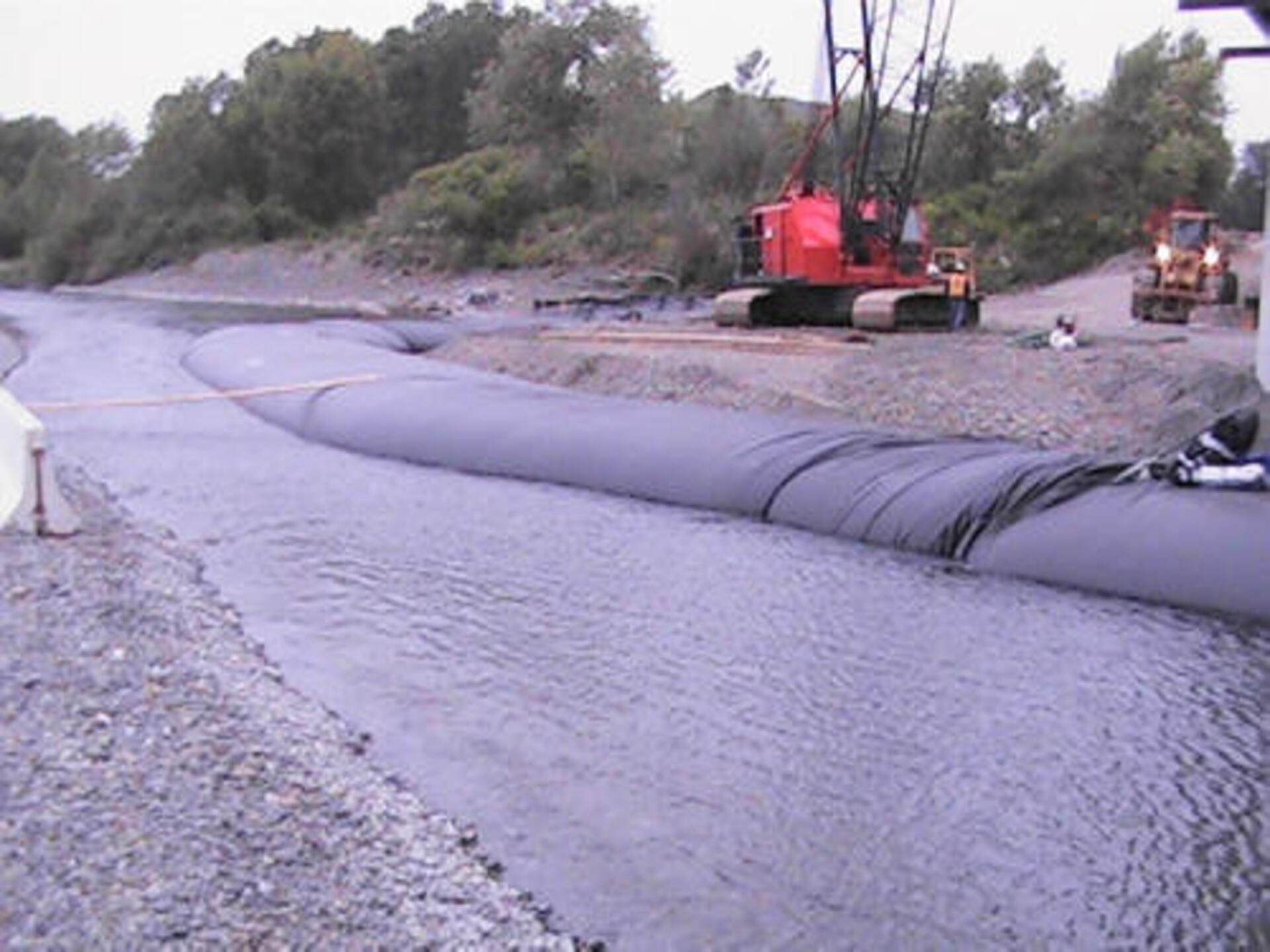
Now the river has been diverted around the protected area, thanks to the AquaDam cofferdam system.
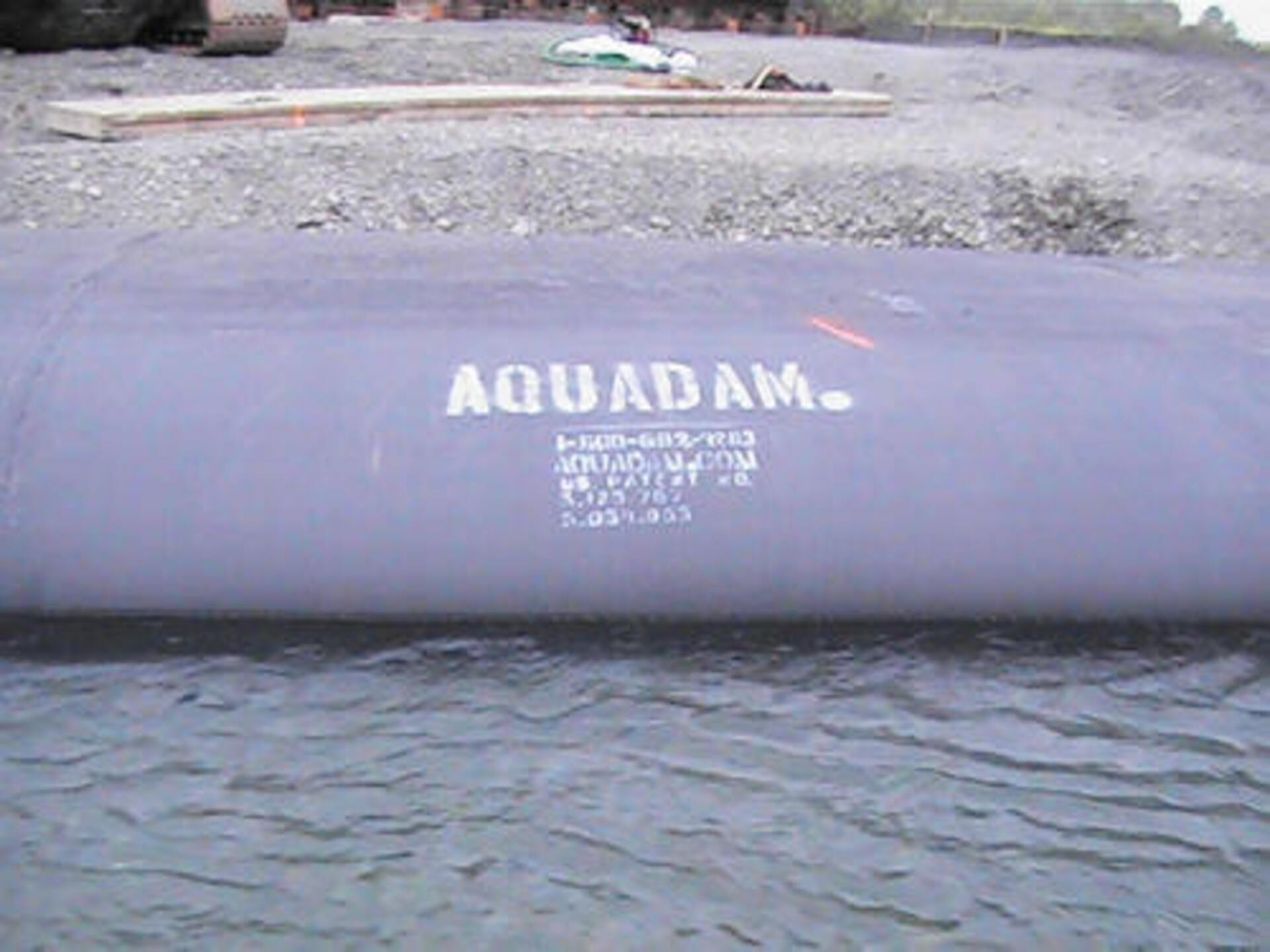
Wonderful job AquaDam!
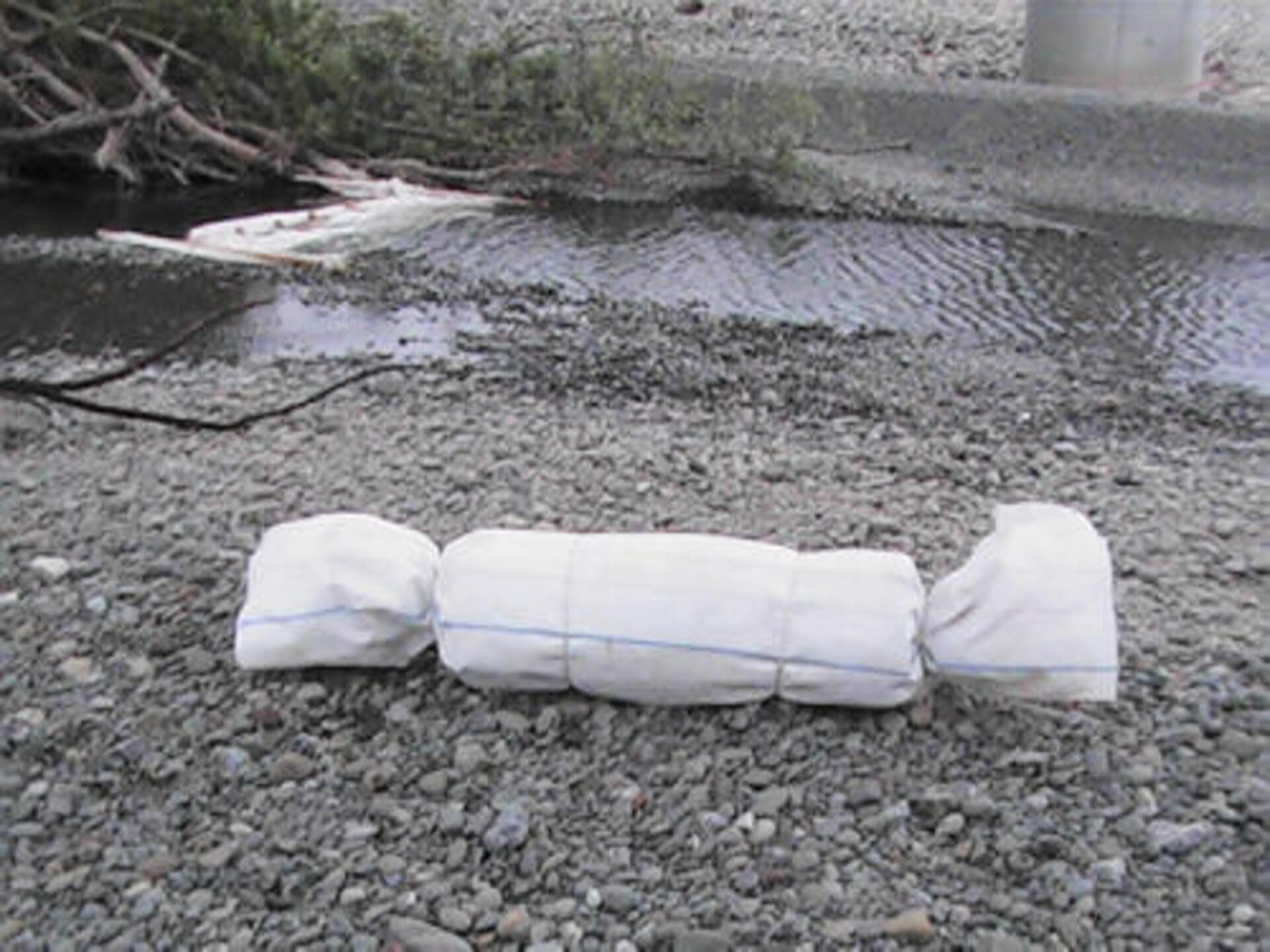
Another smaller AquaDam was needed. AquaDams come shipped rolled-up like a carpet roll, wrapped in a protective covering, and have lifting ropes/straps.
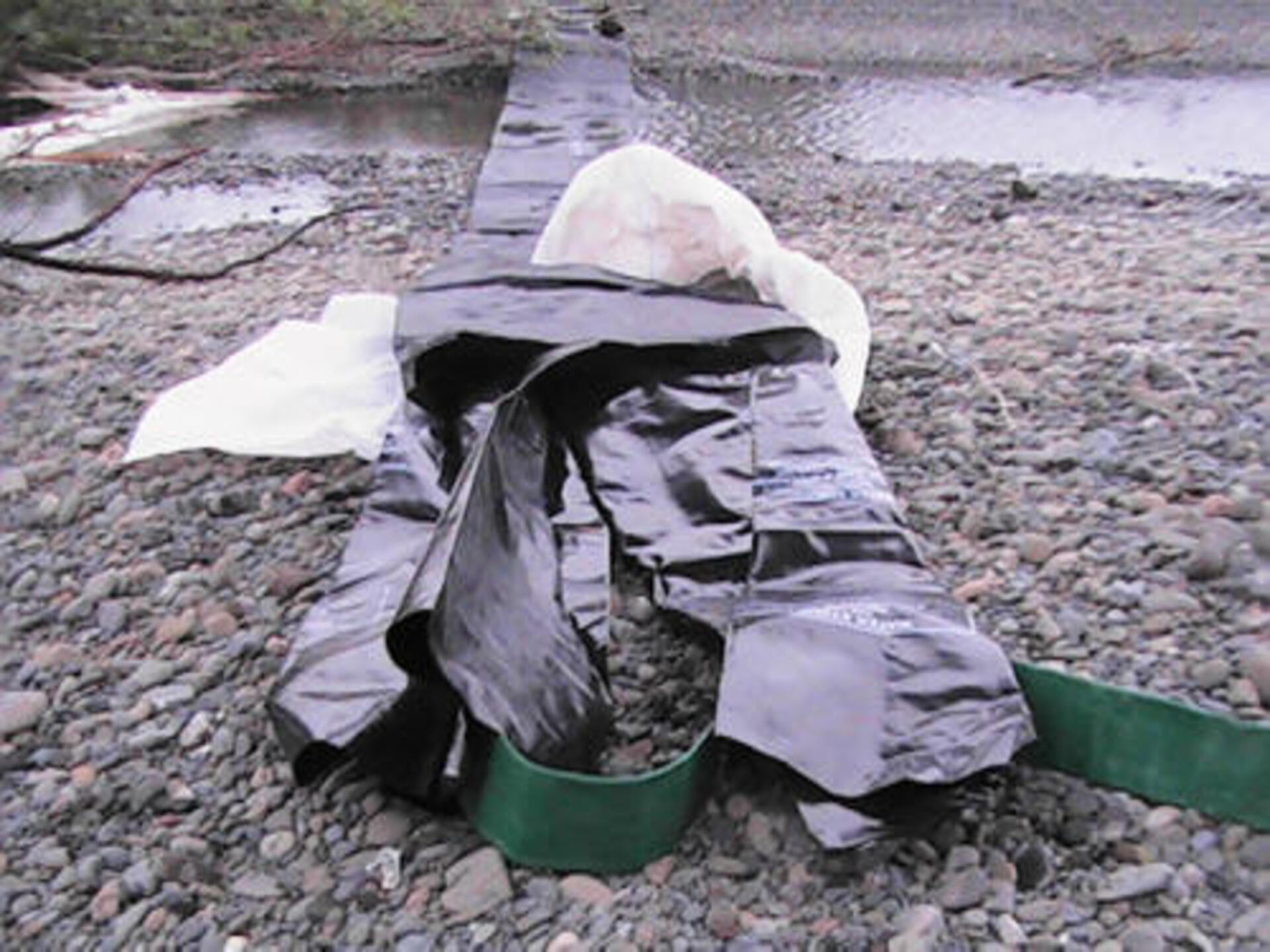
Here we can see the open end and fill-tubes of this SCE AquaDam. A green discharge hose has been inserted into one of the two fill-tubes.
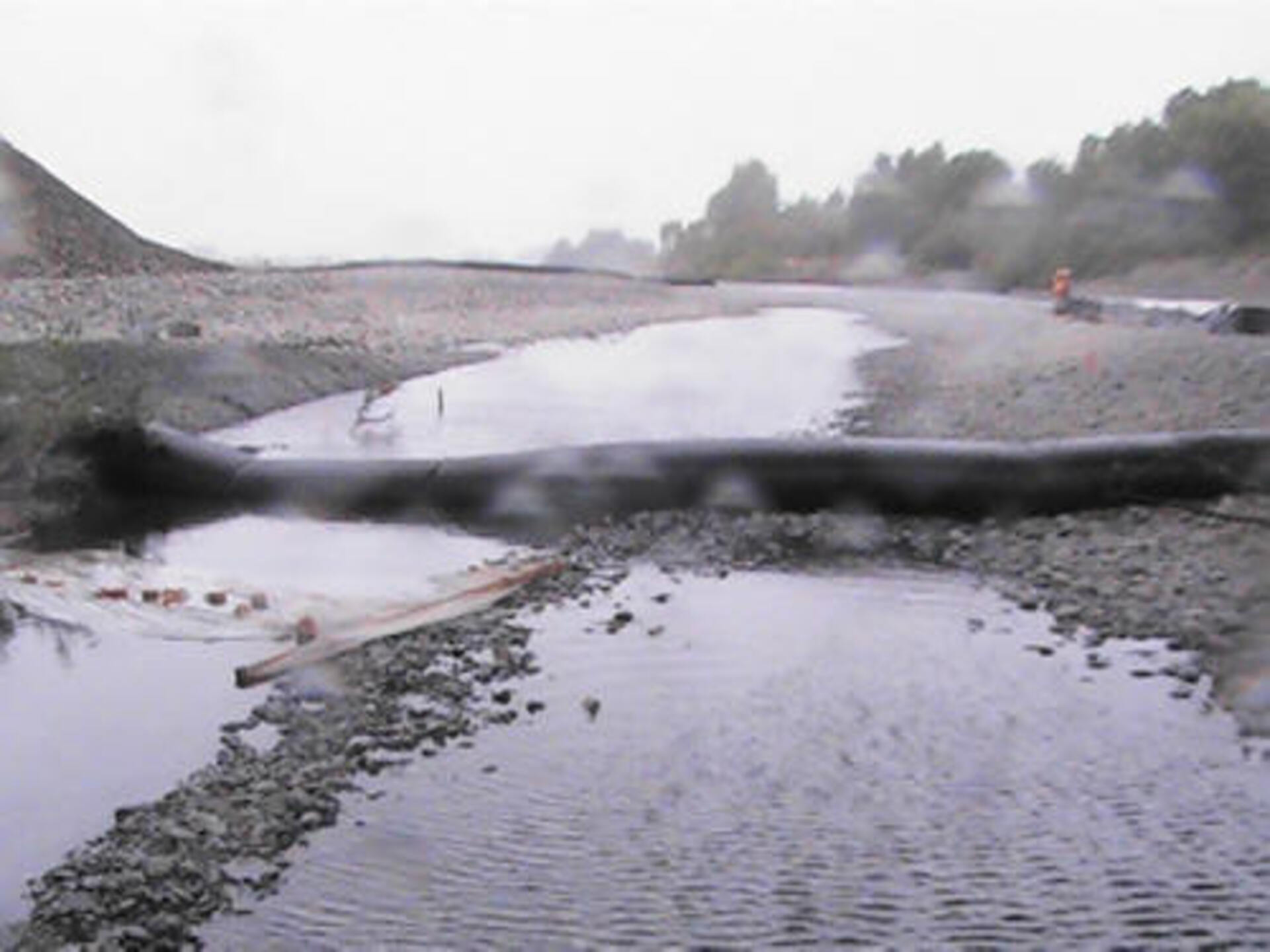
The third SCE AquaDam is pretty much full now.
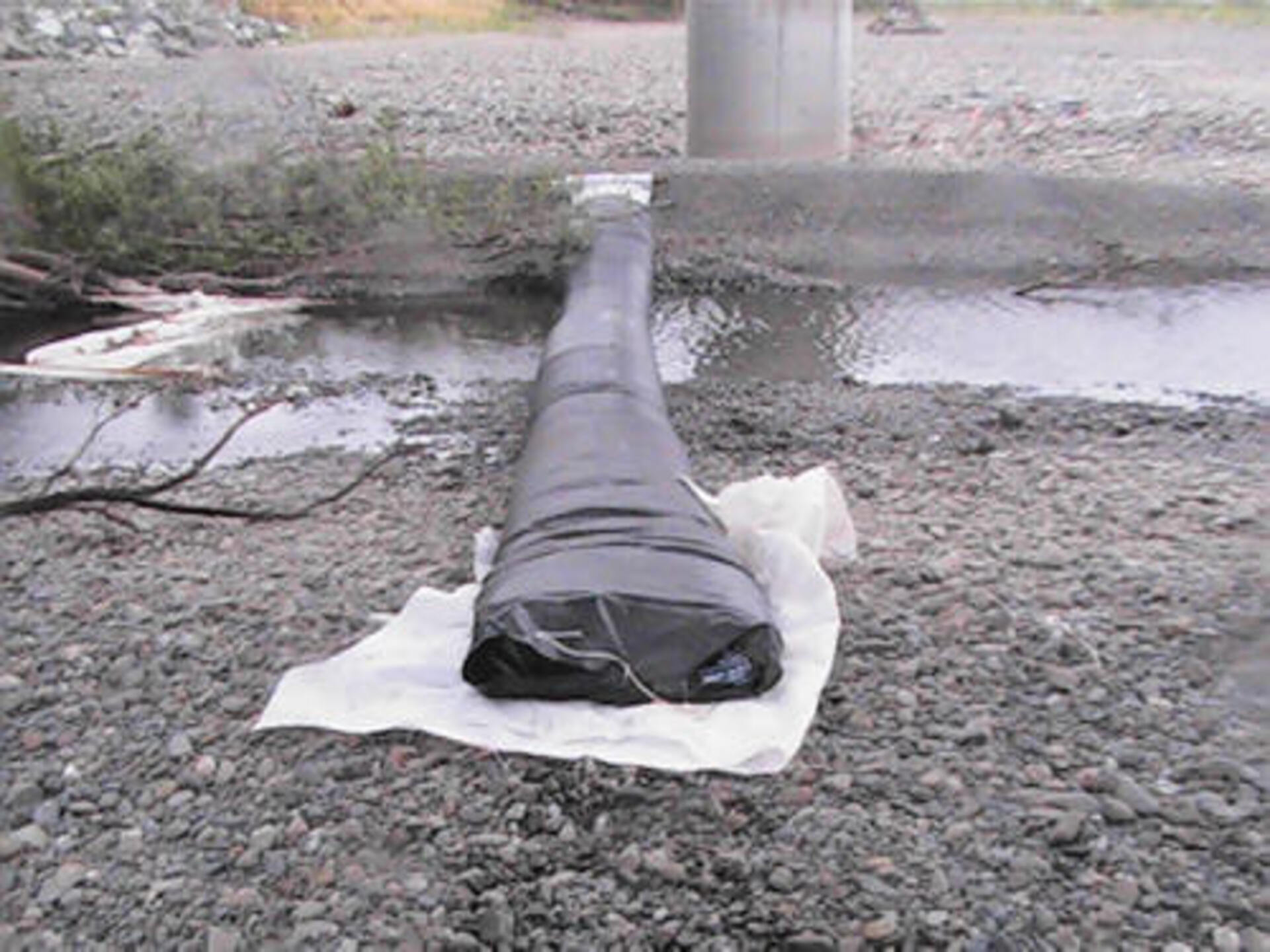
With the third SCE AquaDam now full, workers have tied up and secured it’s fill-tubes.
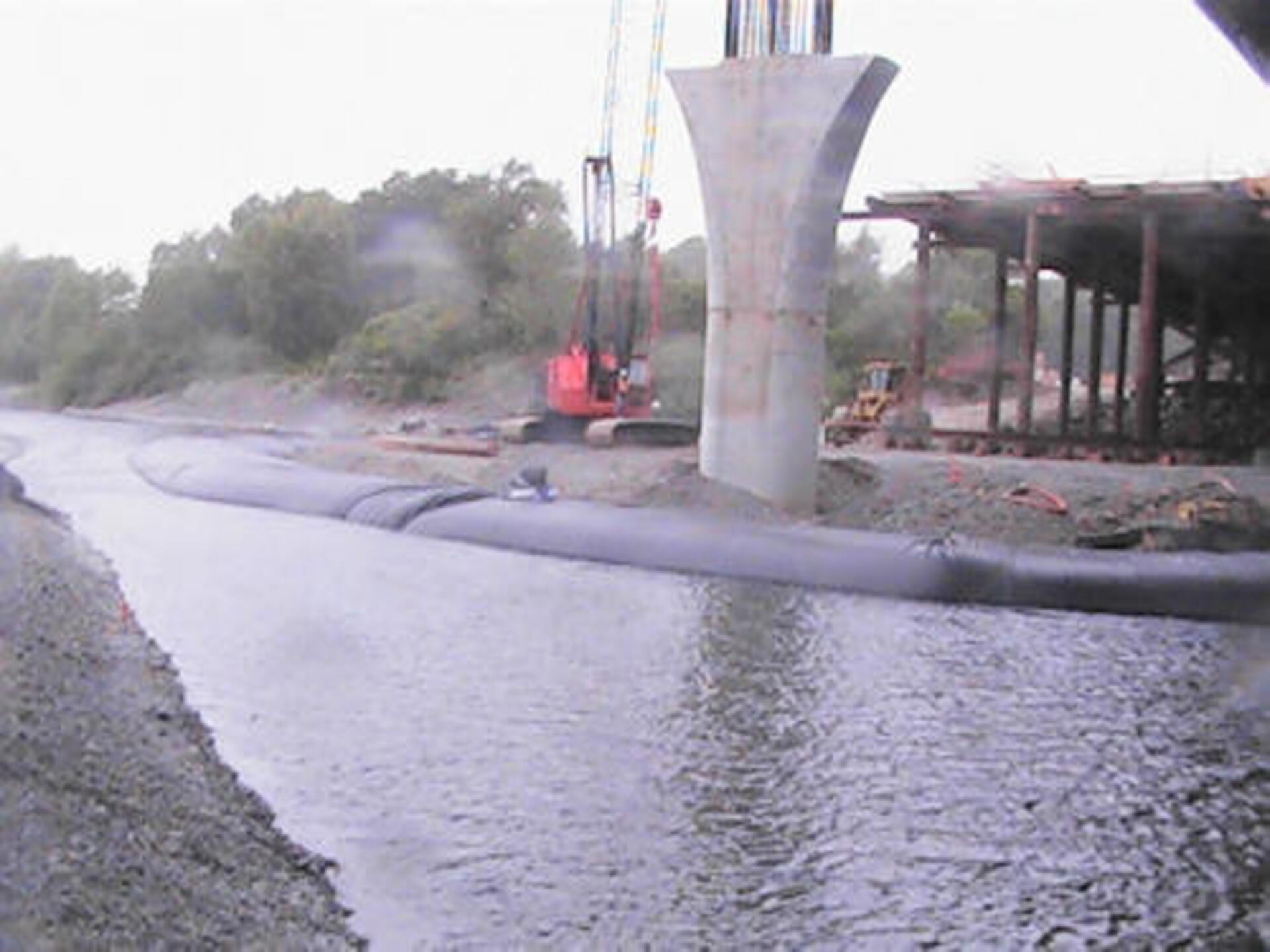
Looking downstream at the first two AquaDams as they keep sediment contained within the confined area.
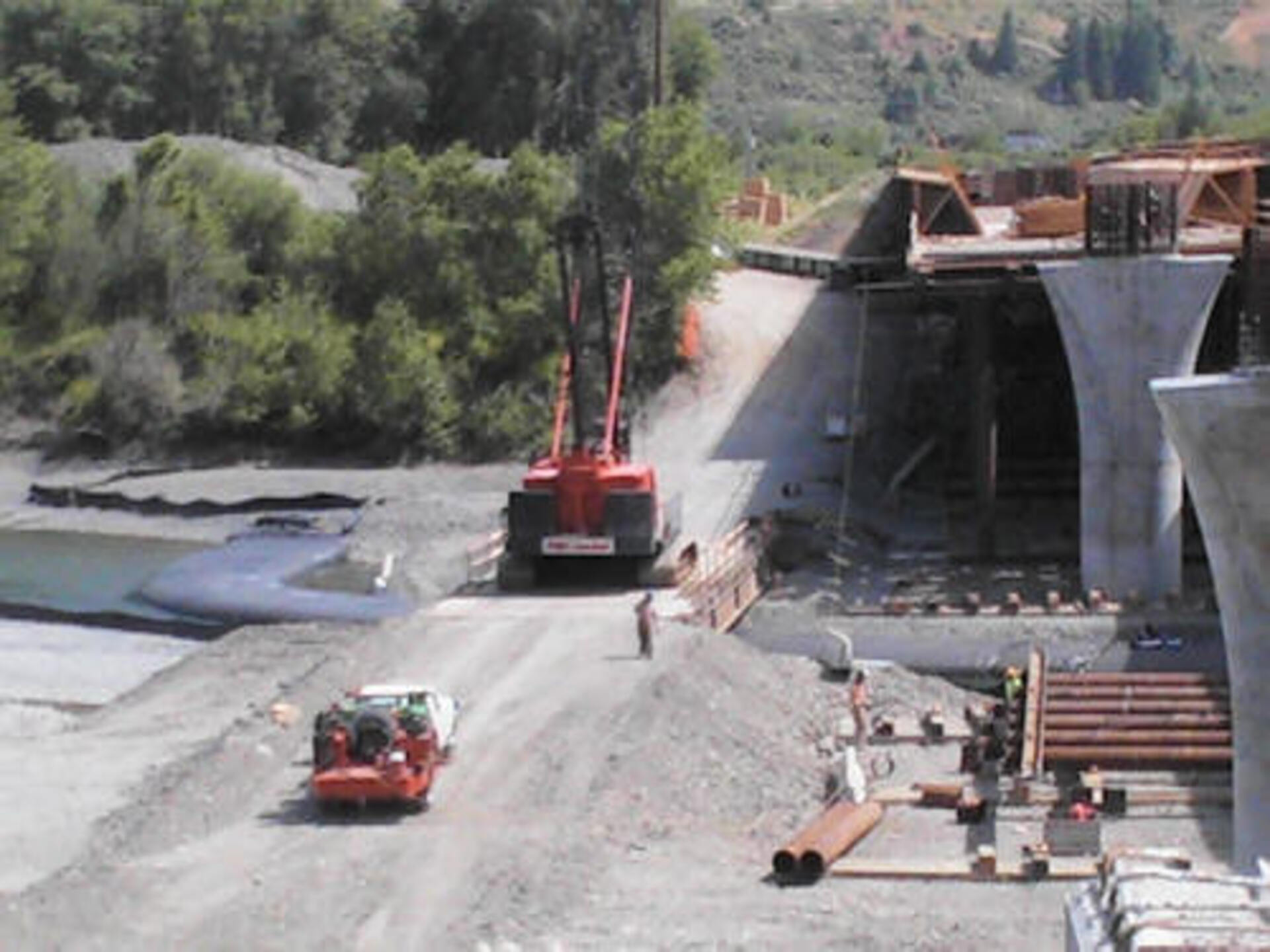
Workers built a temporary bridge over the first set of AquaDams, so that they could access both sides.
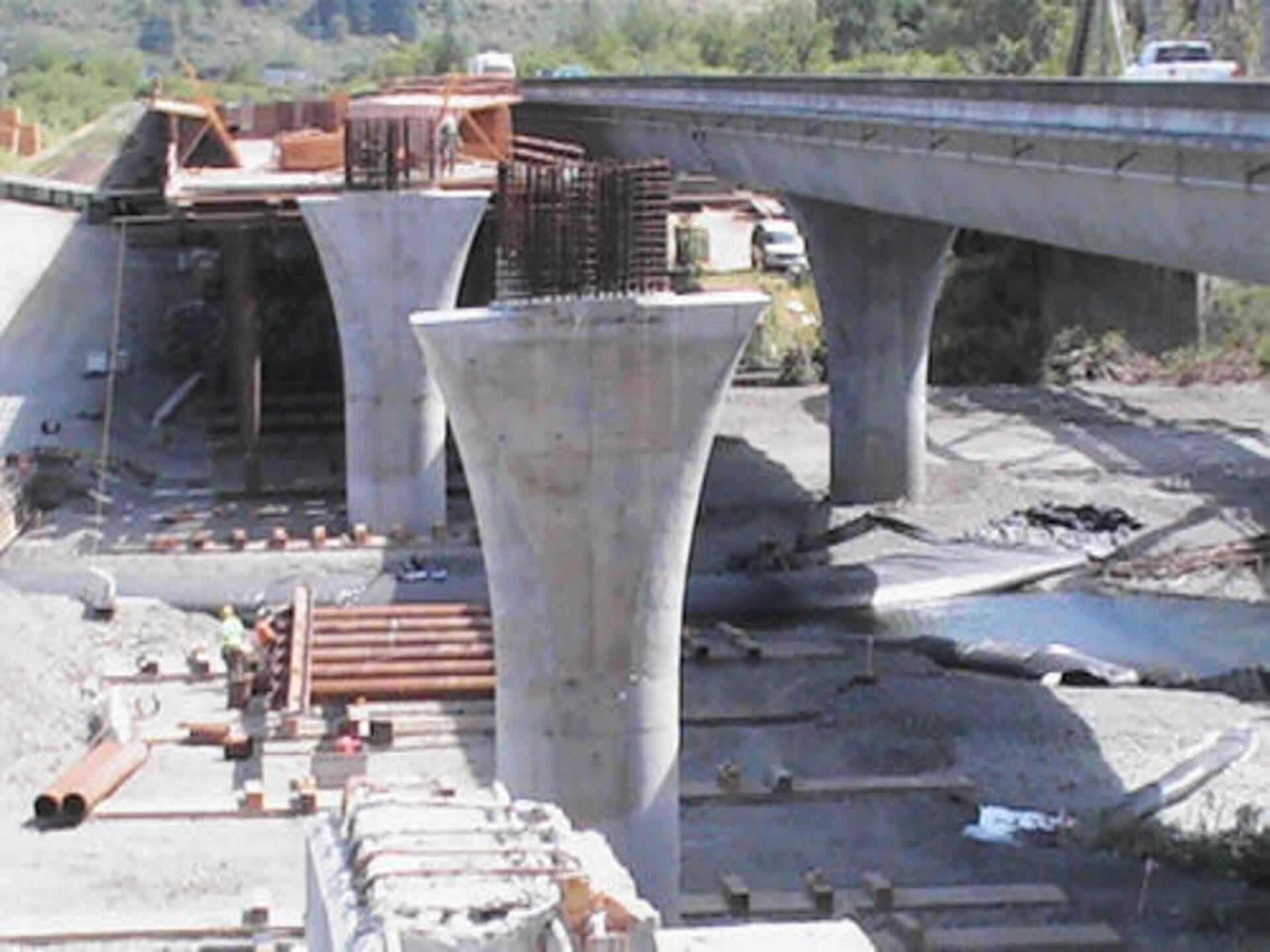
Bridge construction is moving along just great.
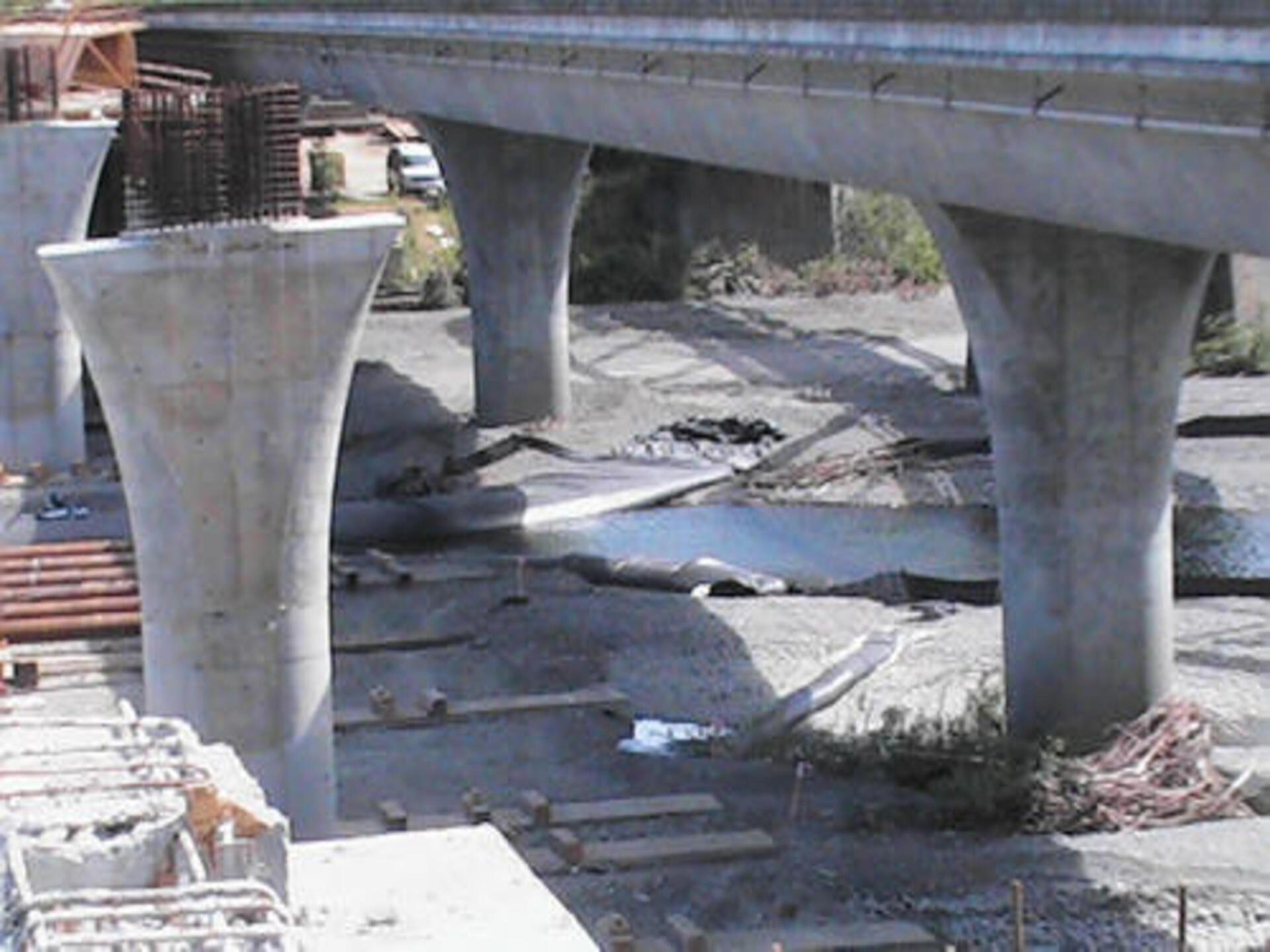
Fantastic job everyone!
